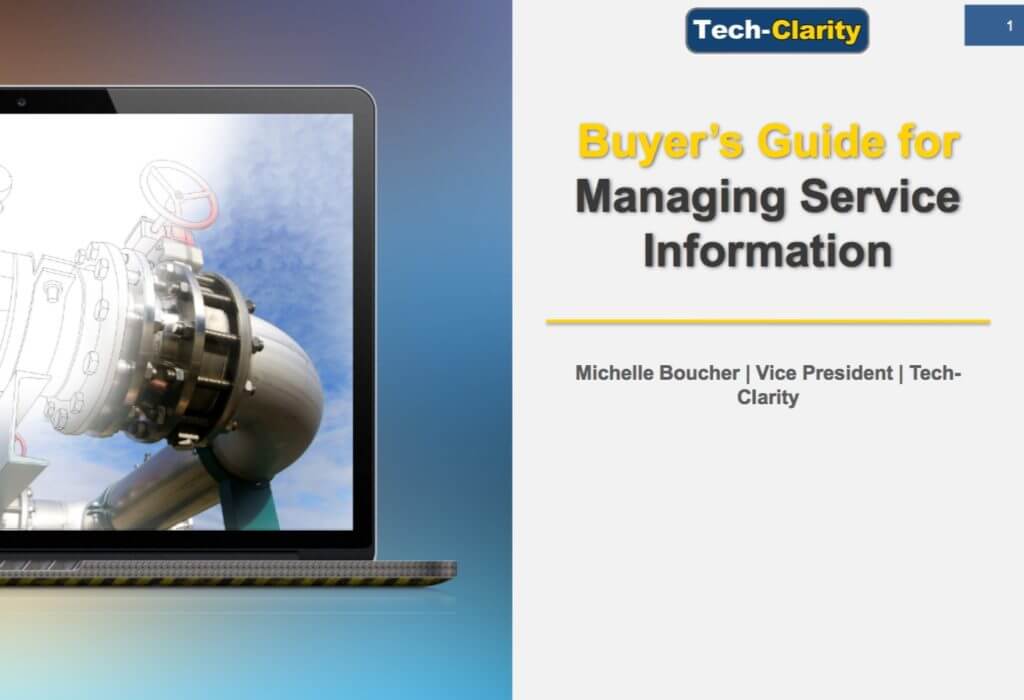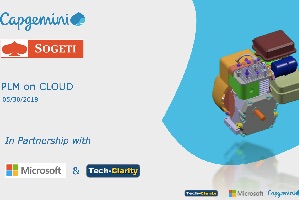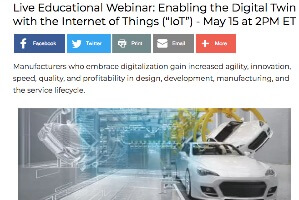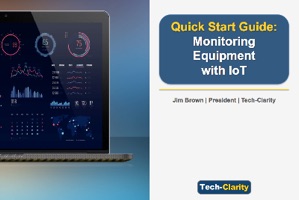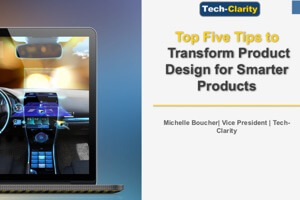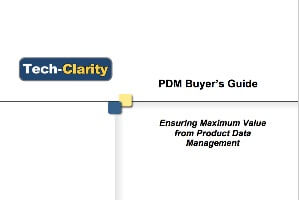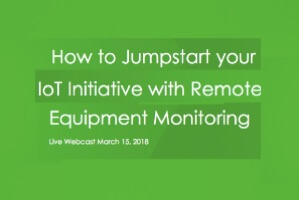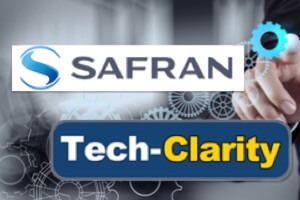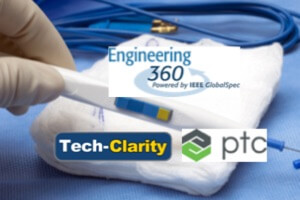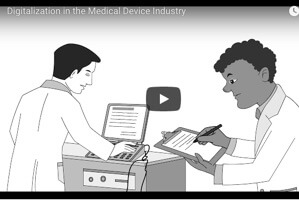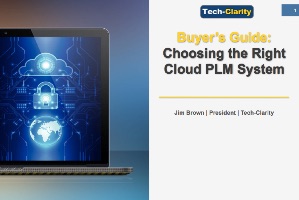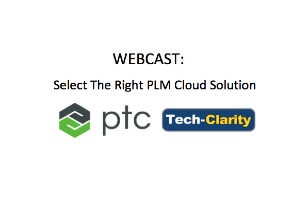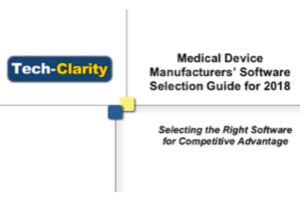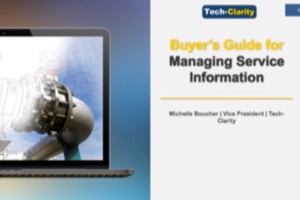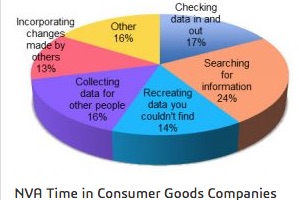PLM helps manufacturers improve innovation and product development performance through streamlined processes, centralized data, and integrated tools. It’s a key part of any manufacturer’s digitalization strategy. Learn how manufacturers are leveraging the cloud to remove the barriers to achieving the strategic benefits of Product Lifecycle Management. Join an interesting panel discussion between Tech-Clarity, Sogeti, and…
- The value of connecting multiple databases on a single platform
- How applying machine learning to analytics helps retail companies
- Examples of how predictive analytics solutions can help retailers
 [post_title] => Retail Analytics Solutions (webcast)
[post_excerpt] =>
[post_status] => publish
[comment_status] => open
[ping_status] => open
[post_password] =>
[post_name] => retail-analytics-solutions-webcast
[to_ping] =>
[pinged] =>
[post_modified] => 2022-11-14 22:26:57
[post_modified_gmt] => 2022-11-15 03:26:57
[post_content_filtered] =>
[post_parent] => 0
[guid] => https://tech-clarity.com/?p=6937
[menu_order] => 0
[post_type] => post
[post_mime_type] =>
[comment_count] => 0
[filter] => raw
)
[2] => WP_Post Object
(
[ID] => 6926
[post_author] => 2
[post_date] => 2018-05-11 14:00:31
[post_date_gmt] => 2018-05-11 18:00:31
[post_content] => How can manufacturers get more value from their digital initiatives by leveraging the Internet of Things (IoT)? Manufacturers who embrace digitalization gain increased agility, innovation, speed, quality, and profitability in design, development, manufacturing, and the service lifecycle. One of the key enablers of these improvements is establishing a closer connection between product models and how physical products operate in the field. The digital twin leverages detailed 3D models, IoT data, and analytics to significantly change the relationship manufacturers have with their products and their customers, driving new sources of value for both.
In this Engineering.com webinar sponsored by Siemens PLM, Tech-Clarity's Jim Brown will explore how companies that embrace digitalization and the digital twin will displace competitors who stick with the status quo.
[post_title] => Retail Analytics Solutions (webcast)
[post_excerpt] =>
[post_status] => publish
[comment_status] => open
[ping_status] => open
[post_password] =>
[post_name] => retail-analytics-solutions-webcast
[to_ping] =>
[pinged] =>
[post_modified] => 2022-11-14 22:26:57
[post_modified_gmt] => 2022-11-15 03:26:57
[post_content_filtered] =>
[post_parent] => 0
[guid] => https://tech-clarity.com/?p=6937
[menu_order] => 0
[post_type] => post
[post_mime_type] =>
[comment_count] => 0
[filter] => raw
)
[2] => WP_Post Object
(
[ID] => 6926
[post_author] => 2
[post_date] => 2018-05-11 14:00:31
[post_date_gmt] => 2018-05-11 18:00:31
[post_content] => How can manufacturers get more value from their digital initiatives by leveraging the Internet of Things (IoT)? Manufacturers who embrace digitalization gain increased agility, innovation, speed, quality, and profitability in design, development, manufacturing, and the service lifecycle. One of the key enablers of these improvements is establishing a closer connection between product models and how physical products operate in the field. The digital twin leverages detailed 3D models, IoT data, and analytics to significantly change the relationship manufacturers have with their products and their customers, driving new sources of value for both.
In this Engineering.com webinar sponsored by Siemens PLM, Tech-Clarity's Jim Brown will explore how companies that embrace digitalization and the digital twin will displace competitors who stick with the status quo.
 Key takeaways include:
Key takeaways include:
- How a digital twin helps create competitive differentiation
- How manufacturers can transform product performance and service through better product insights
- How a digital innovation platform supports the digital twin
Listen to Claus Gärtner, Head of Operations & Quality IT at Roche Diabetes Care, René Zoelfl PTC Life Sciences Development Manager, and Tech-Clarity's Michelle Boucher discuss how to support the development of medical devices. This discussion was an interactive panel discussion highlighting topics such as:
- The PLM journey taken by Roche Diabetes Care
- What drove Roche Diabetes Care to adopt a PLM system
- The results Roche Diabetes Care have achieved with PLM
- Perspectives of software solution selection criteria to support quality initiatives.
 [post_title] => How Roche Diabetes Care Is Winning at PLM, Quality, and Compliance (webcast)
[post_excerpt] =>
[post_status] => publish
[comment_status] => open
[ping_status] => open
[post_password] =>
[post_name] => roche_diabetes_plm_quality
[to_ping] =>
[pinged] =>
[post_modified] => 2022-11-14 22:26:51
[post_modified_gmt] => 2022-11-15 03:26:51
[post_content_filtered] =>
[post_parent] => 0
[guid] => https://tech-clarity.com/?p=6920
[menu_order] => 0
[post_type] => post
[post_mime_type] =>
[comment_count] => 0
[filter] => raw
)
[4] => WP_Post Object
(
[ID] => 6891
[post_author] => 2
[post_date] => 2018-04-10 10:44:34
[post_date_gmt] => 2018-04-10 14:44:34
[post_content] =>
[post_title] => How Roche Diabetes Care Is Winning at PLM, Quality, and Compliance (webcast)
[post_excerpt] =>
[post_status] => publish
[comment_status] => open
[ping_status] => open
[post_password] =>
[post_name] => roche_diabetes_plm_quality
[to_ping] =>
[pinged] =>
[post_modified] => 2022-11-14 22:26:51
[post_modified_gmt] => 2022-11-15 03:26:51
[post_content_filtered] =>
[post_parent] => 0
[guid] => https://tech-clarity.com/?p=6920
[menu_order] => 0
[post_type] => post
[post_mime_type] =>
[comment_count] => 0
[filter] => raw
)
[4] => WP_Post Object
(
[ID] => 6891
[post_author] => 2
[post_date] => 2018-04-10 10:44:34
[post_date_gmt] => 2018-04-10 14:44:34
[post_content] => 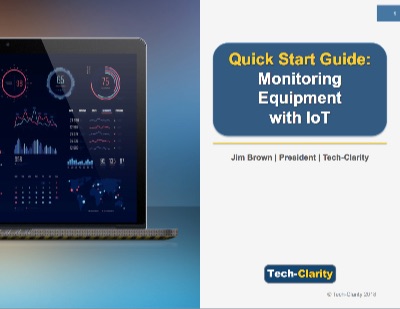 How can manufacturers quickly gain value from remote equipment monitoring using the Internet of Things to begin their digital and service transformations? The Monitoring Equipment with IoT Quick Start Guide eBook offers pragmatic advice for companies that want to jump-start their IoT initiative with a practical approach that leads to much more significant value over time.
Please enjoy the summary below.
For the full eBook click the title to download the full PDF (no charge, no registration required) thanks to our sponsor PTC.
How can manufacturers quickly gain value from remote equipment monitoring using the Internet of Things to begin their digital and service transformations? The Monitoring Equipment with IoT Quick Start Guide eBook offers pragmatic advice for companies that want to jump-start their IoT initiative with a practical approach that leads to much more significant value over time.
Please enjoy the summary below.
For the full eBook click the title to download the full PDF (no charge, no registration required) thanks to our sponsor PTC.
Jump-Start Your IoT Initiative
Manufacturers are making major business improvements using the Internet of Things (IoT). They’re delivering value to customers in new ways and exploring new business models like selling outcomes versus products or shifting to a predictive service model. Some companies are well on their way to this strategic value, while for others it may seem out of reach. How can your company jump-start your IoT initiative? One proven way to get started with IoT is by remotely monitoring machines, either in your own plants or in your customers’ facilities. This gives you the real-time information you need to quickly identify failures and fix equipment more efficiently, improving service while reducing cost. Remote equipment monitoring provides value in the short term and helps develop a strong analytics foundation for your broader IoT strategy. This Quick Start Guide shares suggestions on what companies can do to get equipment connected, start gathering data, and put the data to use. Let’s get started!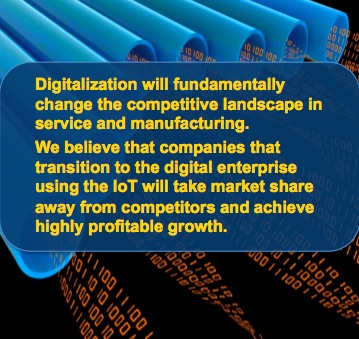
Next Steps
Remote monitoring using the IoT can provide rapid value by helping your company gain visibility to your equipment. The value is strategic, but getting started doesn’t need to be intimidating. You can start small and grow value over time. Your investment can provide a valuable foundation to build on as you connect more equipment or implement more advanced features.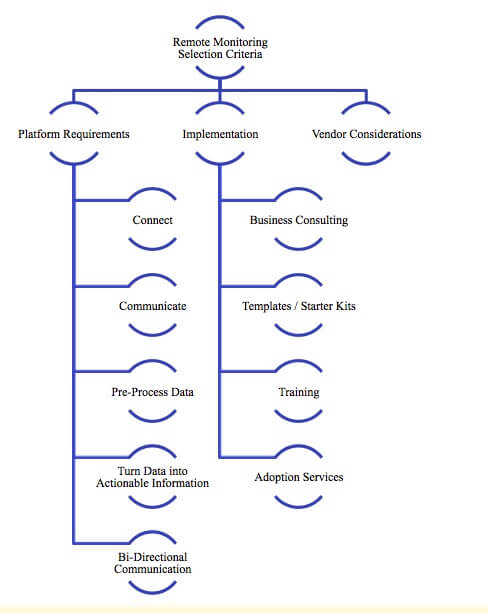 It’s important to find an IoT platform that offers a variety of predefined connectivity and application options so you don’t need to undertake a large integration project from scratch. Find a solution and IoT-savvy partner that can get you started with a simple project, but that offers the business knowledge and advanced tools needed to help you expand on your early success.
Remote equipment monitoring lets companies reduce service cost, increase service revenue, develop stronger relationships, and start the transition to proactive and predictive service. It’s time to get started to improve value for your company and your customers.
*This summary is an abbreviated version of the report and does not contain the full content. A link to download the full report is available above.
If you have difficulty obtaining a copy of the report, please contact us using the "Contact" link below.
[post_title] => IoT Machine Monitoring Quick Start Guide
[post_excerpt] =>
[post_status] => publish
[comment_status] => open
[ping_status] => open
[post_password] =>
[post_name] => iot-monitoring
[to_ping] =>
[pinged] =>
[post_modified] => 2022-11-14 22:27:55
[post_modified_gmt] => 2022-11-15 03:27:55
[post_content_filtered] =>
[post_parent] => 0
[guid] => https://tech-clarity.com/?p=6891
[menu_order] => 0
[post_type] => post
[post_mime_type] =>
[comment_count] => 0
[filter] => raw
)
[5] => WP_Post Object
(
[ID] => 6854
[post_author] => 2572
[post_date] => 2018-04-03 11:52:05
[post_date_gmt] => 2018-04-03 15:52:05
[post_content] =>
It’s important to find an IoT platform that offers a variety of predefined connectivity and application options so you don’t need to undertake a large integration project from scratch. Find a solution and IoT-savvy partner that can get you started with a simple project, but that offers the business knowledge and advanced tools needed to help you expand on your early success.
Remote equipment monitoring lets companies reduce service cost, increase service revenue, develop stronger relationships, and start the transition to proactive and predictive service. It’s time to get started to improve value for your company and your customers.
*This summary is an abbreviated version of the report and does not contain the full content. A link to download the full report is available above.
If you have difficulty obtaining a copy of the report, please contact us using the "Contact" link below.
[post_title] => IoT Machine Monitoring Quick Start Guide
[post_excerpt] =>
[post_status] => publish
[comment_status] => open
[ping_status] => open
[post_password] =>
[post_name] => iot-monitoring
[to_ping] =>
[pinged] =>
[post_modified] => 2022-11-14 22:27:55
[post_modified_gmt] => 2022-11-15 03:27:55
[post_content_filtered] =>
[post_parent] => 0
[guid] => https://tech-clarity.com/?p=6891
[menu_order] => 0
[post_type] => post
[post_mime_type] =>
[comment_count] => 0
[filter] => raw
)
[5] => WP_Post Object
(
[ID] => 6854
[post_author] => 2572
[post_date] => 2018-04-03 11:52:05
[post_date_gmt] => 2018-04-03 15:52:05
[post_content] => 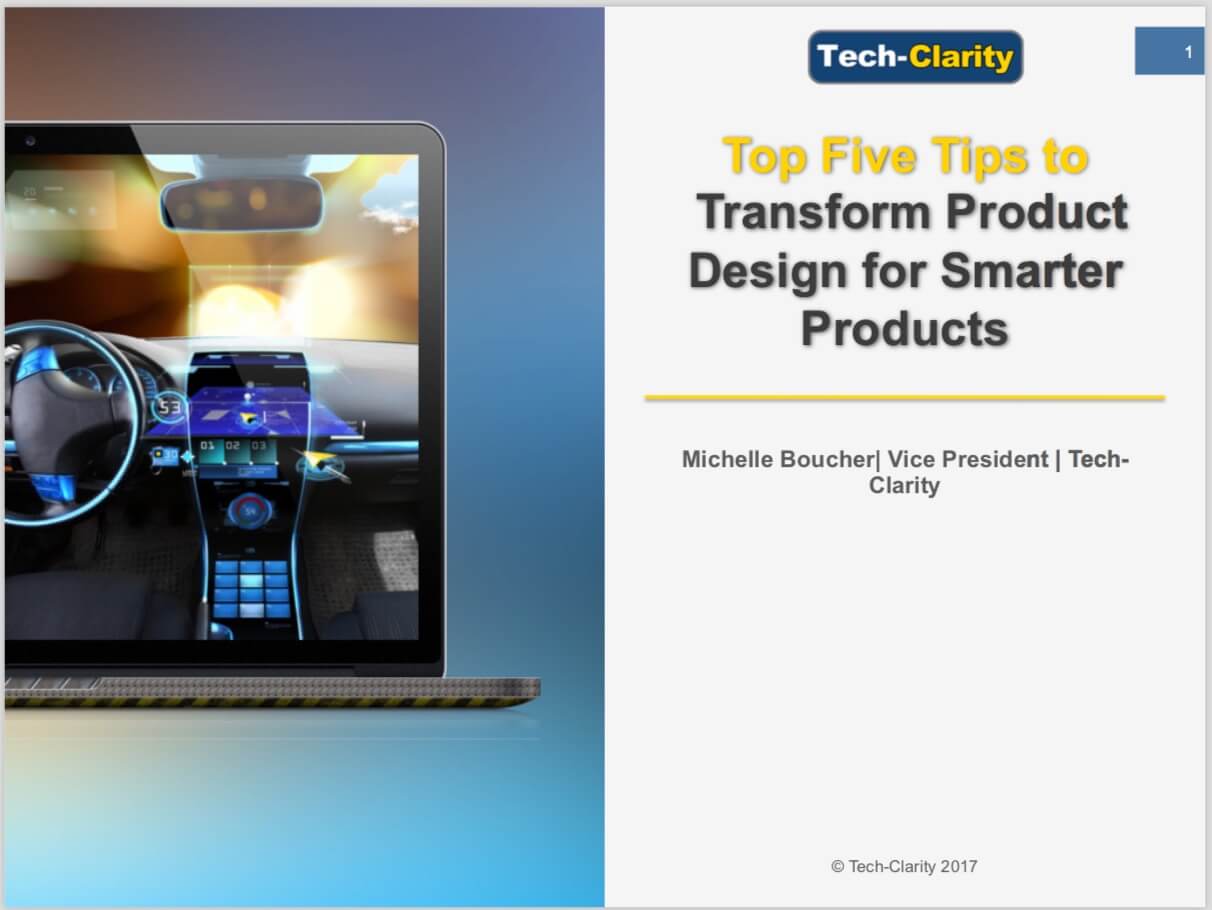 What steps should you take to transform your product design processes so you can develop smarter products?
Tech-Clarity's Top Five Tips to Transform Product Design for Smarter Products shares advice to help companies on their journey to develop smarter products. For many, making products smarter and connected is a key product trend that is becoming increasingly important for innovation and competitive differentiation. Plus many customers are starting to expect it. However, successfully developing smarter and connected products requires changes to your design process. At the same time, it's hard to know what you don't know. As you embark on that journey toward smarter and connected products, there will be lots of lessons learned. Based on survey research, Tech-Clarity has identified five tips to give you some hindsight and help you on that journey with the benefit of some of the lessons learned by other.
Please enjoy the summary* below.
For the full eBook, please visit our sponsor SOLIDWORKS (free of charge, registration required).
What steps should you take to transform your product design processes so you can develop smarter products?
Tech-Clarity's Top Five Tips to Transform Product Design for Smarter Products shares advice to help companies on their journey to develop smarter products. For many, making products smarter and connected is a key product trend that is becoming increasingly important for innovation and competitive differentiation. Plus many customers are starting to expect it. However, successfully developing smarter and connected products requires changes to your design process. At the same time, it's hard to know what you don't know. As you embark on that journey toward smarter and connected products, there will be lots of lessons learned. Based on survey research, Tech-Clarity has identified five tips to give you some hindsight and help you on that journey with the benefit of some of the lessons learned by other.
Please enjoy the summary* below.
For the full eBook, please visit our sponsor SOLIDWORKS (free of charge, registration required).
The Journey Toward New Development Approaches
 The emergence of smart, connected technologies is enabling unprecedented innovation. We have public trash cans that let trash collectors know when they need to be emptied. Pill bottles that remind you to take your medication. Complex machinery that notifies you when it needs servicing. The opportunities and growth potential seem limitless. Technology has become so critical, 52% of companies developing smart products fear losing market share unless they continually make products smarter. On top of that, 47% worry about reduced revenue.
With this in mind, we can expect to see a continual increase in the amount of software and electronics in products. Even 25% of companies that have not already made their products smarter, plan to add software and electronics over the next five years.
To successfully take advantage of the opportunity and transform products into intelligent systems, companies should embark on a journey to perfect development processes and manage the additional complexity. This eBook outlines steps to make your journey to transform your products a success.
The emergence of smart, connected technologies is enabling unprecedented innovation. We have public trash cans that let trash collectors know when they need to be emptied. Pill bottles that remind you to take your medication. Complex machinery that notifies you when it needs servicing. The opportunities and growth potential seem limitless. Technology has become so critical, 52% of companies developing smart products fear losing market share unless they continually make products smarter. On top of that, 47% worry about reduced revenue.
With this in mind, we can expect to see a continual increase in the amount of software and electronics in products. Even 25% of companies that have not already made their products smarter, plan to add software and electronics over the next five years.
To successfully take advantage of the opportunity and transform products into intelligent systems, companies should embark on a journey to perfect development processes and manage the additional complexity. This eBook outlines steps to make your journey to transform your products a success.
You Don’t Know What You Don’t Know
 While emerging technologies open doors for innovation and opportunity, they introduce new challenges. However, as you start your journey, it is hard to know what you don’t know. Learning from the experiences of others to minimize or avoid common challenges should be a first step. Even if you have already started your journey, knowing where to focus your energy for improvement can minimize risk. Based on the experiences of over 180 manufacturers, the top six challenges of making smarter products are:
While emerging technologies open doors for innovation and opportunity, they introduce new challenges. However, as you start your journey, it is hard to know what you don’t know. Learning from the experiences of others to minimize or avoid common challenges should be a first step. Even if you have already started your journey, knowing where to focus your energy for improvement can minimize risk. Based on the experiences of over 180 manufacturers, the top six challenges of making smarter products are:
- Products become much more complex
- Knowledge silos / lack of cross-functional knowledge
- Ensuring product requirements are met
- Lack of visibility into the impact of design decisions across disciplines
- Tools are incompatible across engineering disciplines
- Identifying system level problems sooner
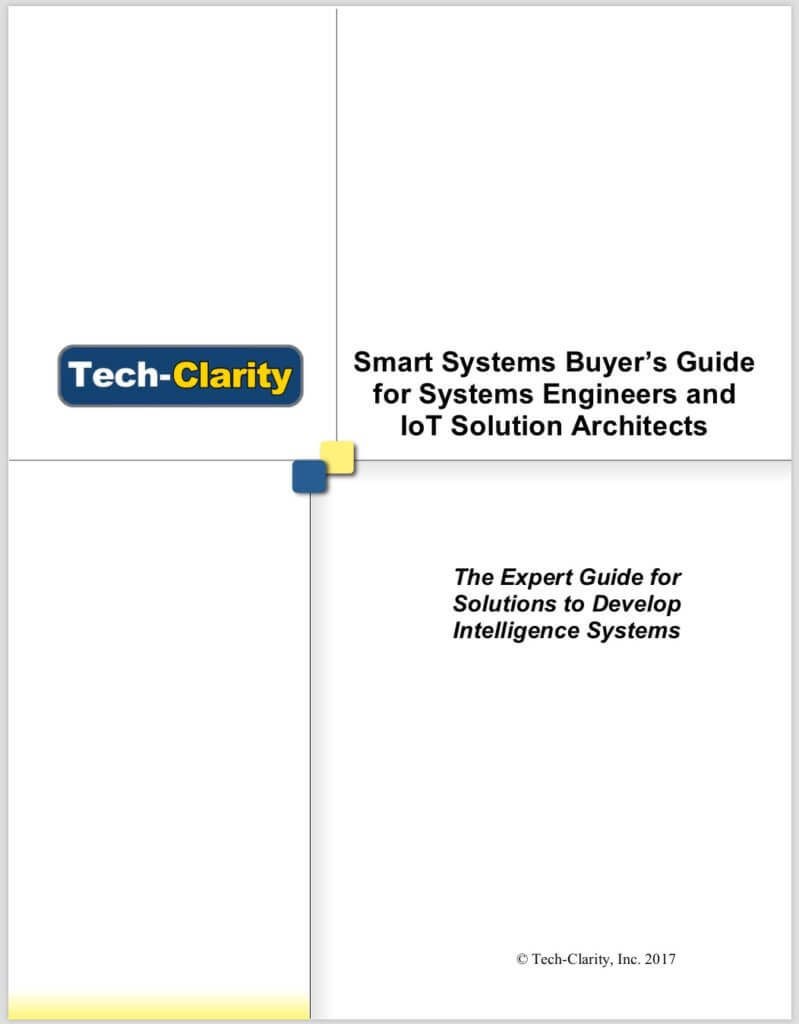 How can manufacturers design systems with greater confidence the system will work as designed?
Tech-Clarity's Smart Systems Buyer’s Guide for Systems Engineers and IoT Solution Architects helps manufacturers develop selection criteria to evaluate software solutions to support system design. The guide targets systems engineerings, IoT solution architects, and others involved with designing systems.
Tech-Clarity’s Buyer’s Guides go beyond software functionality to provide a framework of requirements that impact implementation success and long-term ROI.
Please enjoy the summary below, or click the report to download a PDF overview.
For the full report, please visit our sponsor, PTC, here (free of charge, registration required).
How can manufacturers design systems with greater confidence the system will work as designed?
Tech-Clarity's Smart Systems Buyer’s Guide for Systems Engineers and IoT Solution Architects helps manufacturers develop selection criteria to evaluate software solutions to support system design. The guide targets systems engineerings, IoT solution architects, and others involved with designing systems.
Tech-Clarity’s Buyer’s Guides go beyond software functionality to provide a framework of requirements that impact implementation success and long-term ROI.
Please enjoy the summary below, or click the report to download a PDF overview.
For the full report, please visit our sponsor, PTC, here (free of charge, registration required).
Table of Contents
- Executive Overview
- The Business Value of Systems Engineering
- Start with Process Definition
- Manage Requirements
- Design the System
- Design the System to Be Modular
- Support Product Line Variants
- Enable Detailed Design
- Support Connectivity
- Verify and Validate the System
- Assess Service Requirements
- Consider Vendor Attributes
- Identify Specific Needs for your Company
- Conclusion
- Recommendations
- About the Author
Executive Overview
In today’s world, fierce global competition is driving companies to seek new ways to competitively differentiate their products. Many companies are incorporating embedded software into their products to set their products apart from the competition. Embedded software offers opportunities to incorporate intelligence into a product as well as offer customers a more personalized experience. The Internet of Things (IoT) takes this even further by creating exciting possibilities for new and differentiated services for products with smart, connected devices. While bringing together mechanical components, electronics, and software presents exciting opportunities for innovation, it also brings unique challenges and adds new levels of complexity to today’s products and product development processes. The same goes for connected products as you add sensors, streaming data, and an ecosystem of connected systems. Whether you are a systems engineer or IoT solutions architect, expert systems engineering practices are critical to the success of today’s products. An essential part of implementing expert systems engineering practices is having the technology to support them. This buyer’s guide will help manufacturers select the right software to support systems engineering. This guide is composed of four major sections covering, systems engineering software tool functionality, service requirements, vendor attributes, and special company considerations (Figure 1). Each section includes a checklist of key requirements to investigate when selecting software tools to support systems engineering.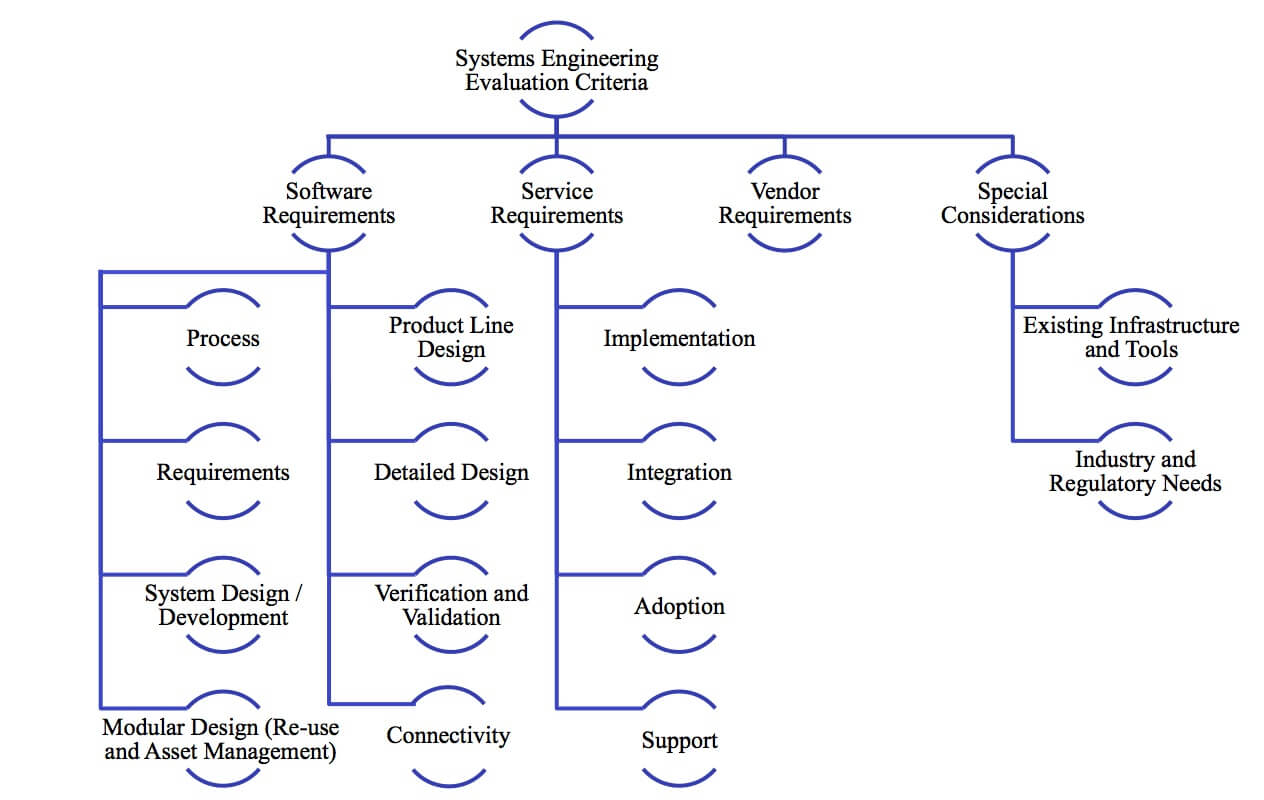 Figure 1: Systems Engineering Evaluation Framework
Figure 1: Systems Engineering Evaluation Framework
- IoT Solutions Architect
- DevOps IoT
- Internet of Things Solutions Engineer
- M2M and IoT Product Management and Engineering
- Technology Manager, Software Engineering (IoT)
- Solutions Engineer (IoT)
- Principal Technical Architect (IoT)
- Innovation Manager for Industry 4.0
- Product Manager
Conclusion
Expert systems engineering practices are key to taking advantage of innovation available through embedded software and the Internet of Things. The opportunities to create smart, connected devices can help companies set their products apart from the competition, helping them win new customers and increase revenues. However, bringing together systems of mechanical, electrical, and software components is complex. That complexity grows exponentially as companies try to meet the various needs of customers with different configurations. Connected systems add even further complexity as you add sensors, streaming data, and connected ecosystems. Complexity means there is risk things will go wrong. The impact of these problems can have a significant business impact and hurt the profitability of the product. Implementing expert systems engineering practices, with the right software tools to support them, can manage this complexity, making it easier to bring profitable products to market successfully. Even if today’s smart, connected devices are relatively simple, as they evolve and offer critical services such as those that impact safety, they will increase in complexity and need the same level of expert systems engineering practices. These practices and the supporting solution are not just limited to systems engineers either. There are a variety of IoT related roles involved with planning, designing, and architecting connected systems, such as IoT solution architects who will struggle with the exact same challenges as systems engineers. Companies planning for growth should consider both current and future needs. However, there are so many aspects of systems engineering; determining the right solution for your company can be very difficult. Using a high-level list of tool and process evaluation criteria such as the ones in this guide can help narrow down potential solutions by providing a quick “litmus test” to determine if a solution and partner are a good fit before conducting detailed functional or technical reviews. In the end, it is important to ensure that functionality, service, vendor, and special requirements are all considered when selecting a solution.Recommendations
Based on industry experience and research for this report, Tech-Clarity offers the following recommendations:- Identify and weigh systems engineering requirements based on company needs, existing applications, industry, and unique product and process requirements
- Use high-level requirements such as the ones in this guide to evaluate solutions based on business fit before engaging in detailed evaluations
- Consider long-term business and process growth needs and the potential to scale across product lines, departments, and engineering silos
- Consider all stages of systems engineering from process, requirements, design, and validation when investing in systems engineering solutions
- Think about all roles that can benefit from systems engineering best practices such as IoT solution architects
- Select a vendor who will be a trusted partner
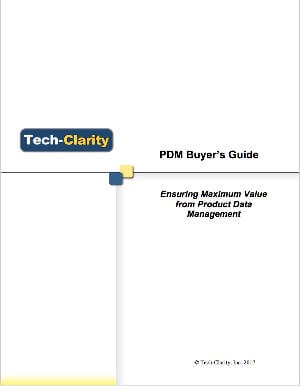 How can manufacturers ensure they get the most value from a new PDM solution? The PDM Buyer's Guide provides criteria for companies to select the right Production Data Management system to manage the complexity of today's products and product development environments. Manufacturers have many choices for managing critical CAD files and product data, including shared drives and the modern equivalents - DropBox, Drive, Google Drive, and a host of other options. But our research shows that they'll get more value from a structured, collaborative data management solution designed to support product development and further into the product lifecycle. This paper shares requirements for the basic capabilities companies need from PDM - Designing, Accessing, and Sharing product data.
Our Buyer's Guides look beyond software requirements to the other elements that help companies get value from their solutions, including criteria to consider for implementation, adoption, service, and vendor selection. This guide also covers special needs including advice for smaller and larger manufacturers and shares considerations for addressing some specific industry needs and supporting the transition to the digital enterprise.
Please enjoy the summary below, or click the report to download a PDF overview (no charge, no registration required).
For the full Buyer's Guide, please visit our sponsor PTC (no charge, registration required).
How can manufacturers ensure they get the most value from a new PDM solution? The PDM Buyer's Guide provides criteria for companies to select the right Production Data Management system to manage the complexity of today's products and product development environments. Manufacturers have many choices for managing critical CAD files and product data, including shared drives and the modern equivalents - DropBox, Drive, Google Drive, and a host of other options. But our research shows that they'll get more value from a structured, collaborative data management solution designed to support product development and further into the product lifecycle. This paper shares requirements for the basic capabilities companies need from PDM - Designing, Accessing, and Sharing product data.
Our Buyer's Guides look beyond software requirements to the other elements that help companies get value from their solutions, including criteria to consider for implementation, adoption, service, and vendor selection. This guide also covers special needs including advice for smaller and larger manufacturers and shares considerations for addressing some specific industry needs and supporting the transition to the digital enterprise.
Please enjoy the summary below, or click the report to download a PDF overview (no charge, no registration required).
For the full Buyer's Guide, please visit our sponsor PTC (no charge, registration required).
Table of Contents
- Introducing the PDM Buyer’s Guide
- The Product Data Management Imperative
- Analyze PDM Capabilities
- Assess Service Requirements
- Consider Vendor Requirements
- Identify Unique Company Needs
- Conclusion
- Recommendations
- About the Author
Introducing the PDM Buyer’s Guide
Product Data Management (PDM) is an important tool to help manufacturers overcome the complexities of designing, developing, producing, and supporting today’s products. Manual and ad-hoc approaches such as shared folders, FTP, Dropbox, box, and hard drives are simply not good solutions to manage critical, complex product information. These approaches may work for very small organizations, but quickly falter as organizations grow and must share information beyond a few core engineers. These techniques also fail to manage data relationships and complex file structures common to 3D CAD systems. PDM systems are purpose-built to address these issues. PDM is a structured, collaborative solution that helps manufacturers control, access, and share crucial product data. Selecting the right PDM system for your business has a large impact on productivity, product success, and profitability.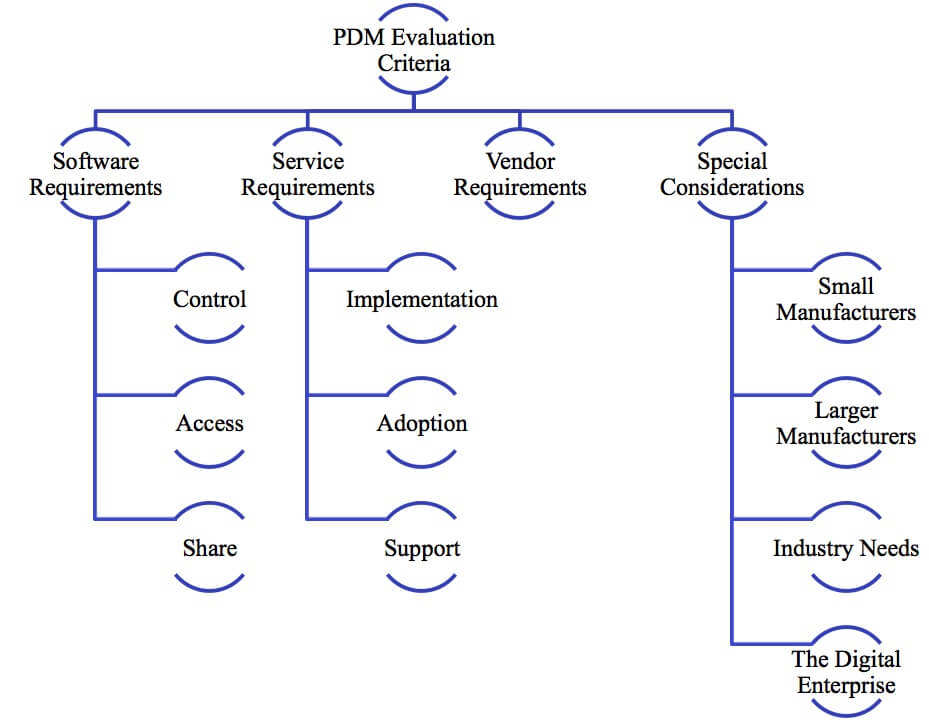 The PDM Buyer’s Guide is a reference tool to provide direction about what to look for when selecting a PDM system for your company. The guide is composed of four sections covering software functionality, service requirements, vendor attributes, and special company considerations. Each of these sections includes a checklist with key requirements to investigate when selecting PDM software. The guide focuses on common requirements that form the foundation of PDM for manufacturers:
The PDM Buyer’s Guide is a reference tool to provide direction about what to look for when selecting a PDM system for your company. The guide is composed of four sections covering software functionality, service requirements, vendor attributes, and special company considerations. Each of these sections includes a checklist with key requirements to investigate when selecting PDM software. The guide focuses on common requirements that form the foundation of PDM for manufacturers:
- Getting files under control so people can find the right revision with confidence
- Making sure concurrent updates don’t overwrite each other to avoid “the last save wins” syndrome
- Making information easily accessible and consumable to teams outside of Engineering for reviews and downstream processes
- Safely sharing information with customers, partners, and the supply chain
- Ensuring intellectual property (IP) is captured and securely accessible regardless of who stored it
- Getting away from complicated shared drive structures that lead to errors
- Making sure people don’t manufacture or purchase against the wrong drawing
- Providing “one version of the truth” versus multiple copies of designs
Conclusion
PDM helps manufacturers address market complexity and improve business performance. As Tech-Clarity’s Managing Engineering Data concludes, “Product data management is the fundamental building block of any engineering software strategy and helps companies get the most out of their precious engineering resources.” When evaluating PDM, manufacturers need to take into account: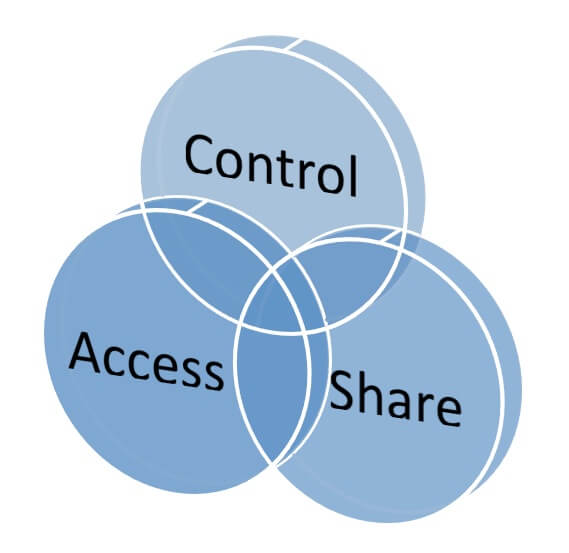 Product requirements
Product requirements- Implementation, adoption, and support requirements
- Vendor / business requirements
- Special requirements based on company size (particularly for very small or very large organizations)
- Special considerations to meet industry needs
- Future requirements as business continues to digitalize
Reccommendations
Based on industry experience and research for this report, Tech-Clarity offers the following recommendations:- Identify and weigh PDM requirements based on company needs, company size, industry, and any unique company needs
- Use high level requirements such as the ones in this guide to evaluate solutions based on business fit before engaging in detailed evaluations
- Consider using more simple, commodity technical solutions like cloud or managed services solutions for smaller companies, companies that wish to move quickly, or those with limited IT resources
- Take user adoption into account, including simplified access and increased visualization for non-engineering resources
- Consider using more full-featured, scalable solutions for larger organizations that have more demanding process and scalability needs and can afford the IT resources required to support capabilities such as site synchronization
- Take into account long-term business and process growth needs including digitalization and IoT initiatives
 How can monitoring equipment remotely provide value and help get your IoT initiative started? Jim Brown joins PTC's Michael Anderson for a webcast discussion to find out. Jim will share perspectives from his research including an overview of how remote equipment monitoring via the IoT can help drive significant service improvements. Jim will share tips from his upcoming Remote Equipment Monitoring Quick Start Guide including key things manufacturers should consider as they consider an initiative or select a solution to support this aspect of their digital transformation. Jim and Michael will also answer audience questions.
Register for the webinar now (no charge, registration required)
[post_title] => Jumpstarting IoT with Remote Equipment Monitoring (webcast)
[post_excerpt] =>
[post_status] => publish
[comment_status] => open
[ping_status] => open
[post_password] =>
[post_name] => iot-monitoring-webcast
[to_ping] =>
[pinged] =>
[post_modified] => 2022-11-14 22:26:56
[post_modified_gmt] => 2022-11-15 03:26:56
[post_content_filtered] =>
[post_parent] => 0
[guid] => https://tech-clarity.com/?p=6775
[menu_order] => 0
[post_type] => post
[post_mime_type] =>
[comment_count] => 0
[filter] => raw
)
[9] => WP_Post Object
(
[ID] => 6742
[post_author] => 2572
[post_date] => 2018-03-08 11:30:30
[post_date_gmt] => 2018-03-08 16:30:30
[post_content] =>
How can monitoring equipment remotely provide value and help get your IoT initiative started? Jim Brown joins PTC's Michael Anderson for a webcast discussion to find out. Jim will share perspectives from his research including an overview of how remote equipment monitoring via the IoT can help drive significant service improvements. Jim will share tips from his upcoming Remote Equipment Monitoring Quick Start Guide including key things manufacturers should consider as they consider an initiative or select a solution to support this aspect of their digital transformation. Jim and Michael will also answer audience questions.
Register for the webinar now (no charge, registration required)
[post_title] => Jumpstarting IoT with Remote Equipment Monitoring (webcast)
[post_excerpt] =>
[post_status] => publish
[comment_status] => open
[ping_status] => open
[post_password] =>
[post_name] => iot-monitoring-webcast
[to_ping] =>
[pinged] =>
[post_modified] => 2022-11-14 22:26:56
[post_modified_gmt] => 2022-11-15 03:26:56
[post_content_filtered] =>
[post_parent] => 0
[guid] => https://tech-clarity.com/?p=6775
[menu_order] => 0
[post_type] => post
[post_mime_type] =>
[comment_count] => 0
[filter] => raw
)
[9] => WP_Post Object
(
[ID] => 6742
[post_author] => 2572
[post_date] => 2018-03-08 11:30:30
[post_date_gmt] => 2018-03-08 16:30:30
[post_content] => 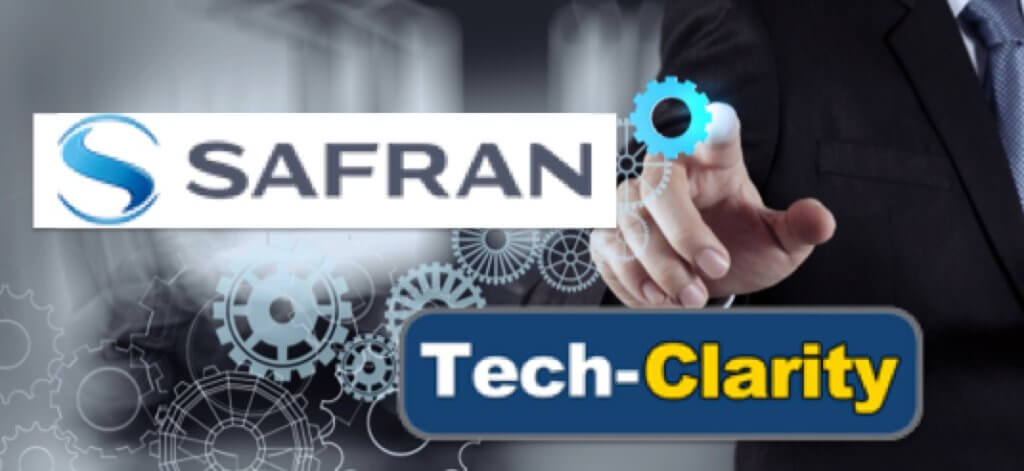 What's the best way to make sure the product you design and build actually meets requirements? How do requirements management solutions help?
Listen and interview of SAFRAN Group's Yannick Laplume, Tech-Clarity's Michelle Boucher, and PTC's Christoph Braeuchle as they discuss the value of of a requirements management solution. They explore topics such as:
What's the best way to make sure the product you design and build actually meets requirements? How do requirements management solutions help?
Listen and interview of SAFRAN Group's Yannick Laplume, Tech-Clarity's Michelle Boucher, and PTC's Christoph Braeuchle as they discuss the value of of a requirements management solution. They explore topics such as:
- The business value of requirements management
- How to identify specific requirements needs
- How to select the right solution for your organization
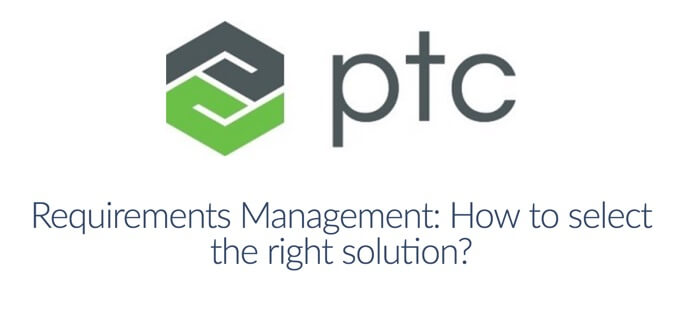 [post_title] => Requirements Management: How to select the right solution? (webcast)
[post_excerpt] =>
[post_status] => publish
[comment_status] => open
[ping_status] => open
[post_password] =>
[post_name] => requirements-management-solution-webcast
[to_ping] =>
[pinged] =>
[post_modified] => 2022-11-14 22:26:56
[post_modified_gmt] => 2022-11-15 03:26:56
[post_content_filtered] =>
[post_parent] => 0
[guid] => https://tech-clarity.com/?p=6742
[menu_order] => 0
[post_type] => post
[post_mime_type] =>
[comment_count] => 0
[filter] => raw
)
[10] => WP_Post Object
(
[ID] => 6740
[post_author] => 2572
[post_date] => 2018-03-07 11:30:20
[post_date_gmt] => 2018-03-07 16:30:20
[post_content] =>
[post_title] => Requirements Management: How to select the right solution? (webcast)
[post_excerpt] =>
[post_status] => publish
[comment_status] => open
[ping_status] => open
[post_password] =>
[post_name] => requirements-management-solution-webcast
[to_ping] =>
[pinged] =>
[post_modified] => 2022-11-14 22:26:56
[post_modified_gmt] => 2022-11-15 03:26:56
[post_content_filtered] =>
[post_parent] => 0
[guid] => https://tech-clarity.com/?p=6742
[menu_order] => 0
[post_type] => post
[post_mime_type] =>
[comment_count] => 0
[filter] => raw
)
[10] => WP_Post Object
(
[ID] => 6740
[post_author] => 2572
[post_date] => 2018-03-07 11:30:20
[post_date_gmt] => 2018-03-07 16:30:20
[post_content] => 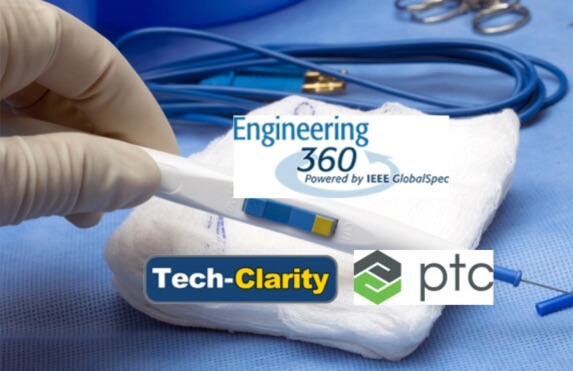 Does having multiple systems to manage product information create challenges for your company? Do you find some systems are so heavily customized, it's hard to take advantage of the latest software enhancements? How can a PLM medical device solution help? If you have thought about any of these questions, you will find this webinar especially interesting, especially if you are in the medical device industry.
Does having multiple systems to manage product information create challenges for your company? Do you find some systems are so heavily customized, it's hard to take advantage of the latest software enhancements? How can a PLM medical device solution help? If you have thought about any of these questions, you will find this webinar especially interesting, especially if you are in the medical device industry.
Listen to Tina Kunshier of Boston Scientific and Tech-Clarity's Michelle Boucher discuss how to select the right software solution to support the development of medical devices. This discussion will be a live interview highlighting topics such as:
- The PLM journey taken by Boston Scientific
- What drove Boston Scientific to consolidate PLM systems
- How Boston Scientific executed their strategy for a unified PLM system
- Selection criteria you should look for in a PLM solution, especially for medical device companies
- Advice to improve product development efficiencies and support regulatory compliance
 [post_title] => How Boston Scientific Selected their PLM Medical Device Software Solution (webcast)
[post_excerpt] =>
[post_status] => publish
[comment_status] => open
[ping_status] => open
[post_password] =>
[post_name] => boston-scientific-plm-medical-device
[to_ping] =>
[pinged] =>
[post_modified] => 2022-11-14 22:26:54
[post_modified_gmt] => 2022-11-15 03:26:54
[post_content_filtered] =>
[post_parent] => 0
[guid] => https://tech-clarity.com/?p=6740
[menu_order] => 0
[post_type] => post
[post_mime_type] =>
[comment_count] => 0
[filter] => raw
)
[11] => WP_Post Object
(
[ID] => 6732
[post_author] => 2572
[post_date] => 2018-03-05 11:56:22
[post_date_gmt] => 2018-03-05 16:56:22
[post_content] =>
[post_title] => How Boston Scientific Selected their PLM Medical Device Software Solution (webcast)
[post_excerpt] =>
[post_status] => publish
[comment_status] => open
[ping_status] => open
[post_password] =>
[post_name] => boston-scientific-plm-medical-device
[to_ping] =>
[pinged] =>
[post_modified] => 2022-11-14 22:26:54
[post_modified_gmt] => 2022-11-15 03:26:54
[post_content_filtered] =>
[post_parent] => 0
[guid] => https://tech-clarity.com/?p=6740
[menu_order] => 0
[post_type] => post
[post_mime_type] =>
[comment_count] => 0
[filter] => raw
)
[11] => WP_Post Object
(
[ID] => 6732
[post_author] => 2572
[post_date] => 2018-03-05 11:56:22
[post_date_gmt] => 2018-03-05 16:56:22
[post_content] => Listen to, PTC's Dave Duncan and Tech-Clarity's Michelle Boucher discuss how to improve the accuracy of service information for field personnel. They share stories about Embraer, Airbus Helicopters, and Kirloskar Oil Engines and explain how they are transforming their service organizations. During this webcast, you will also learn:
- How poor service information affects technician productivity, customer satisfaction, and after-sales operations
- Best practices for producing accurate service documentation based on Tech-Clarity research
- What you can do to keep service manuals up-to-date so that field technicians can trust service documentation
- Tips to support the cultural changes required to support the transformation for a more service oriented company
 [post_title] => Service Information: The Pivotal Factor in Your Aftermarket Business (webcast)
[post_excerpt] =>
[post_status] => publish
[comment_status] => open
[ping_status] => open
[post_password] =>
[post_name] => service-information-webcast
[to_ping] =>
[pinged] =>
[post_modified] => 2022-11-14 22:26:54
[post_modified_gmt] => 2022-11-15 03:26:54
[post_content_filtered] =>
[post_parent] => 0
[guid] => https://tech-clarity.com/?p=6732
[menu_order] => 0
[post_type] => post
[post_mime_type] =>
[comment_count] => 0
[filter] => raw
)
[12] => WP_Post Object
(
[ID] => 6721
[post_author] => 2
[post_date] => 2018-02-28 08:48:20
[post_date_gmt] => 2018-02-28 13:48:20
[post_content] => How can digitalization help medical device companies improve innovation and drive profitable growth despite increased complexity and regulatory scrutiny? This animated video offers a look at what a digital medical device company looks like and offers three initiatives companies can adopt to start their digital transformation.
Digitalization offers significant benefits to medical device manufacturers because the status quo is no longer good enough. It relies too much on paper and electronic documents, inevitability leading to missed deadlines, mistakes, and inefficiency. In today's environment, key contributors work independently on their own information, leading to integration errors, compliance issues, and market delays. Now, companies can transform their businesses so that each step in the development process leverages digital information from the prior step, takes advantage of comprehensive 3D product models, and creates a complete digital thread. Digitalization can then extend into manufacturing and enable device manufacturers to quickly commission production and track manufacturing.
Medical Device companies have the opportunity to leverage digitalization and the digital enterprise to develop innovative products and bring them to market quickly. By digitalizing designs and workflows, digital medical device companies can:
[post_title] => Service Information: The Pivotal Factor in Your Aftermarket Business (webcast)
[post_excerpt] =>
[post_status] => publish
[comment_status] => open
[ping_status] => open
[post_password] =>
[post_name] => service-information-webcast
[to_ping] =>
[pinged] =>
[post_modified] => 2022-11-14 22:26:54
[post_modified_gmt] => 2022-11-15 03:26:54
[post_content_filtered] =>
[post_parent] => 0
[guid] => https://tech-clarity.com/?p=6732
[menu_order] => 0
[post_type] => post
[post_mime_type] =>
[comment_count] => 0
[filter] => raw
)
[12] => WP_Post Object
(
[ID] => 6721
[post_author] => 2
[post_date] => 2018-02-28 08:48:20
[post_date_gmt] => 2018-02-28 13:48:20
[post_content] => How can digitalization help medical device companies improve innovation and drive profitable growth despite increased complexity and regulatory scrutiny? This animated video offers a look at what a digital medical device company looks like and offers three initiatives companies can adopt to start their digital transformation.
Digitalization offers significant benefits to medical device manufacturers because the status quo is no longer good enough. It relies too much on paper and electronic documents, inevitability leading to missed deadlines, mistakes, and inefficiency. In today's environment, key contributors work independently on their own information, leading to integration errors, compliance issues, and market delays. Now, companies can transform their businesses so that each step in the development process leverages digital information from the prior step, takes advantage of comprehensive 3D product models, and creates a complete digital thread. Digitalization can then extend into manufacturing and enable device manufacturers to quickly commission production and track manufacturing.
Medical Device companies have the opportunity to leverage digitalization and the digital enterprise to develop innovative products and bring them to market quickly. By digitalizing designs and workflows, digital medical device companies can:
- Connect data and processes across disciplines and the lifecycle
- Leverage digital data from one step to the next
- Streamline engineering
- Reduce errors
- Improve traceability
- Digital design for medical device companies (overview)
- Digital design
- Digital design transfer
- Paperless manufacturing
 What should manufacturers look for when they buy cloud software for Product Lifecycle Management? Our PLM Cloud Buyer's Guide shares the important factors companies need to know when they evaluate cloud solutions. The guide explains the reasons companies are pursuing cloud options including standard benefits like reduced implementation cost and faster time to benefit, but also highlights specific advantages to product developers including the ability to better support global environments and to design-anywhere, build-anywhere. The eBook also shares the benefits for IT departments such as the ability to provide cloud-level performance and offload operational overhead to focus on more value-added activities. But despite the benefits of the cloud, the guide explains the need to have a fully capable PLM system as the highest priority before prioritizing the deployment option, what we call a solution-first approach.
As with our other Buyer's Guides, the guide goes beyond software requirements to share deployment options, pricing considerations, implementation factors, vendor considerations, and other special requirements such as industry needs. The guide also points out the need to select a solution and a partner that will serve as the foundation for continued growth as PLM continues to expand as the digital innovation backbone and serves the future needs of the digital enterprise with IoT, AR, the digital twin, and more.
Please enjoy the summary below, or click the report to download a PDF overview (free of charge, no registration required).
For the full Buyer's Guide, please visit our sponsor PTC.
What should manufacturers look for when they buy cloud software for Product Lifecycle Management? Our PLM Cloud Buyer's Guide shares the important factors companies need to know when they evaluate cloud solutions. The guide explains the reasons companies are pursuing cloud options including standard benefits like reduced implementation cost and faster time to benefit, but also highlights specific advantages to product developers including the ability to better support global environments and to design-anywhere, build-anywhere. The eBook also shares the benefits for IT departments such as the ability to provide cloud-level performance and offload operational overhead to focus on more value-added activities. But despite the benefits of the cloud, the guide explains the need to have a fully capable PLM system as the highest priority before prioritizing the deployment option, what we call a solution-first approach.
As with our other Buyer's Guides, the guide goes beyond software requirements to share deployment options, pricing considerations, implementation factors, vendor considerations, and other special requirements such as industry needs. The guide also points out the need to select a solution and a partner that will serve as the foundation for continued growth as PLM continues to expand as the digital innovation backbone and serves the future needs of the digital enterprise with IoT, AR, the digital twin, and more.
Please enjoy the summary below, or click the report to download a PDF overview (free of charge, no registration required).
For the full Buyer's Guide, please visit our sponsor PTC.
Cloud PLM Adoption and Buyer's Guide Introduction
Although manufacturers have started to adopt cloud solutions for many aspects of their business, Product Lifecycle Management (PLM) has lagged behind. The transition, however, is picking up pace. More companies are considering cloud PLM and many already leverage the cloud to get more value from PLM (and achieve that value faster).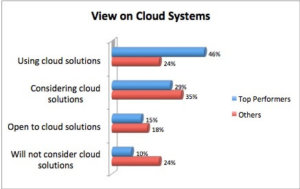 Given the increased interest and adoption, it’s time to put together some selection criteria to help companies with their decisions. We recommend that companies pick their solution first and then choose their deployment option. This is effectively a “solution first” approach as opposed to a “cloud first” approach. We find that companies are just not willing to shortchange functionality in this crucial area. They recognize it’s important to evaluate the functional capabilities of a PLM system to ensure they’ll gain the significant top- and bottom-line benefits that PLM delivers.
There are still important decisions to make after a solution is selected. Many systems can be deployed in a variety of ways ranging from cloud Software as a Service (SaaS) to traditional, on-premise implementations. The deployment choice impacts important factors including cost, security, resource requirements, performance, risk, and time to benefit. This guide is designed to help companies navigate the options and choose the best-suited PLM cloud option for their business.
*This summary is an abbreviated version of the report and does not contain the full content. A link to download the full report is available above.
[post_title] => Cloud PLM Buyer's Guide
[post_excerpt] =>
[post_status] => publish
[comment_status] => open
[ping_status] => open
[post_password] =>
[post_name] => cloud-plm-guide
[to_ping] =>
[pinged] =>
[post_modified] => 2022-11-14 22:27:54
[post_modified_gmt] => 2022-11-15 03:27:54
[post_content_filtered] =>
[post_parent] => 0
[guid] => https://tech-clarity.com/?p=6708
[menu_order] => 0
[post_type] => post
[post_mime_type] =>
[comment_count] => 0
[filter] => raw
)
[14] => WP_Post Object
(
[ID] => 6633
[post_author] => 2
[post_date] => 2018-02-06 06:48:21
[post_date_gmt] => 2018-02-06 11:48:21
[post_content] =>
Given the increased interest and adoption, it’s time to put together some selection criteria to help companies with their decisions. We recommend that companies pick their solution first and then choose their deployment option. This is effectively a “solution first” approach as opposed to a “cloud first” approach. We find that companies are just not willing to shortchange functionality in this crucial area. They recognize it’s important to evaluate the functional capabilities of a PLM system to ensure they’ll gain the significant top- and bottom-line benefits that PLM delivers.
There are still important decisions to make after a solution is selected. Many systems can be deployed in a variety of ways ranging from cloud Software as a Service (SaaS) to traditional, on-premise implementations. The deployment choice impacts important factors including cost, security, resource requirements, performance, risk, and time to benefit. This guide is designed to help companies navigate the options and choose the best-suited PLM cloud option for their business.
*This summary is an abbreviated version of the report and does not contain the full content. A link to download the full report is available above.
[post_title] => Cloud PLM Buyer's Guide
[post_excerpt] =>
[post_status] => publish
[comment_status] => open
[ping_status] => open
[post_password] =>
[post_name] => cloud-plm-guide
[to_ping] =>
[pinged] =>
[post_modified] => 2022-11-14 22:27:54
[post_modified_gmt] => 2022-11-15 03:27:54
[post_content_filtered] =>
[post_parent] => 0
[guid] => https://tech-clarity.com/?p=6708
[menu_order] => 0
[post_type] => post
[post_mime_type] =>
[comment_count] => 0
[filter] => raw
)
[14] => WP_Post Object
(
[ID] => 6633
[post_author] => 2
[post_date] => 2018-02-06 06:48:21
[post_date_gmt] => 2018-02-06 11:48:21
[post_content] => 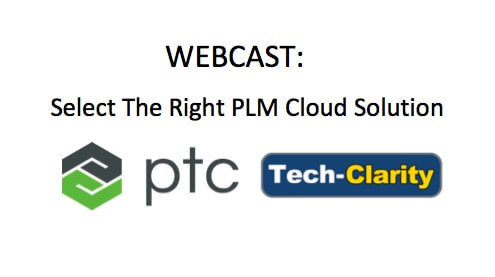 Jim Brown joins PTC's Alan Goldman and Mark Lobo for a web panel discussion on adopting Cloud PLM. Jim will share perspectives from his recent research including cloud PLM benefits and requirements. Jim will share insights from his upcoming Cloud PLM Buyer's guide including criteria companies should look for in a solution, for adoption, and their vendor partner. Jim and the other presenters will also anwer audience questions.
Jim, Alan, and Mark will be joined by Tim Curran of KPIT for a North American panel on Engineering360 on the same topic.
Register for the European webcast now (replay pending) (free of charge, registration required).
Register for the North American webinar now (free of charge, registration required)
[post_title] => Selecting the Right Cloud PLM System (webcast)
[post_excerpt] =>
[post_status] => publish
[comment_status] => open
[ping_status] => open
[post_password] =>
[post_name] => cloud-plm-3
[to_ping] =>
[pinged] =>
[post_modified] => 2022-11-14 22:26:54
[post_modified_gmt] => 2022-11-15 03:26:54
[post_content_filtered] =>
[post_parent] => 0
[guid] => http://tech-clarity.com/?p=6633
[menu_order] => 0
[post_type] => post
[post_mime_type] =>
[comment_count] => 0
[filter] => raw
)
[15] => WP_Post Object
(
[ID] => 6609
[post_author] => 2572
[post_date] => 2018-01-30 19:40:51
[post_date_gmt] => 2018-01-31 00:40:51
[post_content] =>
Jim Brown joins PTC's Alan Goldman and Mark Lobo for a web panel discussion on adopting Cloud PLM. Jim will share perspectives from his recent research including cloud PLM benefits and requirements. Jim will share insights from his upcoming Cloud PLM Buyer's guide including criteria companies should look for in a solution, for adoption, and their vendor partner. Jim and the other presenters will also anwer audience questions.
Jim, Alan, and Mark will be joined by Tim Curran of KPIT for a North American panel on Engineering360 on the same topic.
Register for the European webcast now (replay pending) (free of charge, registration required).
Register for the North American webinar now (free of charge, registration required)
[post_title] => Selecting the Right Cloud PLM System (webcast)
[post_excerpt] =>
[post_status] => publish
[comment_status] => open
[ping_status] => open
[post_password] =>
[post_name] => cloud-plm-3
[to_ping] =>
[pinged] =>
[post_modified] => 2022-11-14 22:26:54
[post_modified_gmt] => 2022-11-15 03:26:54
[post_content_filtered] =>
[post_parent] => 0
[guid] => http://tech-clarity.com/?p=6633
[menu_order] => 0
[post_type] => post
[post_mime_type] =>
[comment_count] => 0
[filter] => raw
)
[15] => WP_Post Object
(
[ID] => 6609
[post_author] => 2572
[post_date] => 2018-01-30 19:40:51
[post_date_gmt] => 2018-01-31 00:40:51
[post_content] => 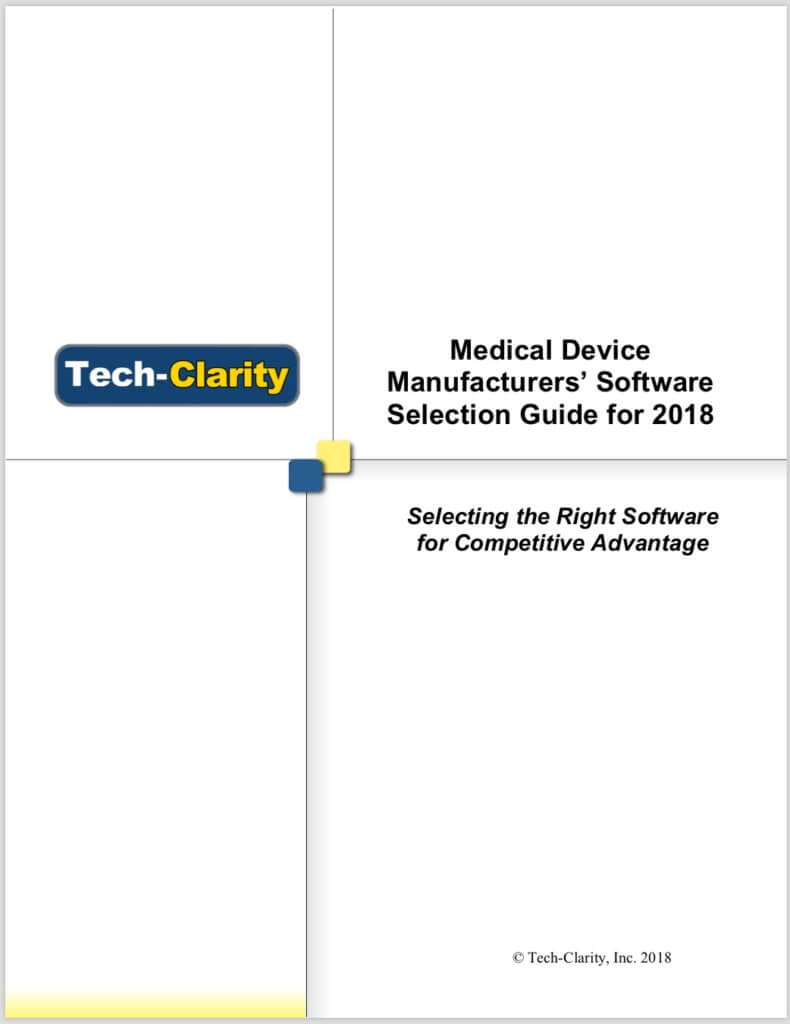 Tech-Clarity's Medical Devices Manufacturers Software Selection Guide for 2018 helps manufacturers identify the right buying criteria for software solutions to support developing, producing, and servicing medical devices. For 2018, the guide has also been updated to include additional considerations for the Internet of Things (IoT). This buyer's guide also takes into account unique needs for medical device companies including regulatory compliance and support for the FDA's Case for Quality.
Tech-Clarity’s Buyer’s Guides go beyond software functionality to provide a framework of requirements that impact implementation success and long-term ROI, including:
Tech-Clarity's Medical Devices Manufacturers Software Selection Guide for 2018 helps manufacturers identify the right buying criteria for software solutions to support developing, producing, and servicing medical devices. For 2018, the guide has also been updated to include additional considerations for the Internet of Things (IoT). This buyer's guide also takes into account unique needs for medical device companies including regulatory compliance and support for the FDA's Case for Quality.
Tech-Clarity’s Buyer’s Guides go beyond software functionality to provide a framework of requirements that impact implementation success and long-term ROI, including:
- Software capabilities
- Implementation
- User adoption
- Support
- Vendor characteristics / attributes
- Unique business needs
Table of Contents
- Executive Overview
- Identify Your Challenges
- Transition from Document Centric to Product Centric
- Consider the Complete Lifecycle
- Manage the Product
- Manage Requirements (Customer Needs to Regulatory)
- Support Product Development for Hardware
- Support Software Development
- Enable Smart and Connected Products
- Ensure Regulatory Compliance
- Support Quality Management
- Plan for Manufacturing
- Control Suppliers
- Plan for Service
- Assess Implementation Requirements
- Consider Vendor Attributes
- Identify Specific Needs for your Company
- Conclusion
- Recommendations
- About the Author
Executive Overview
Medical device companies are in the business of making people’s lives better. As Joel Hembrock, Senior Designer and CAD Administrator at Medtronic says, “Our patients are the people who benefit from our products. Restoring life is our main focus. [We want] to be giving people their lives back, restoring their health, allowing them to actually live again and not have their disease or any other ailment keep them from being able to live.” It is an exciting time for the industry as technology advancements have opened up new and exciting opportunities that have the potential to further this mission. On top of this, an aging Baby Boomer population will create additional demand for medical devices. Consequently, the industry should see significant growth. In fact, the Evaluate MedTech World Preview 2017, Outlook to 2022 report forecasts a 5.1% growth rate every year for the next five years. However, it will be the companies who can overcome the unique challenges in the industry who will be best positioned to take advantage of this growth. With lives at stake, patient safety is of the utmost importance. As such, the industry faces heavy regulations. Compliance is so critical that if medical device companies do not adhere to FDA, EU and other worldwide standards and regulations, they will not be profitable. However, so much time, effort, and cost go into compliance documentation; it takes resources away from innovating and ensuring high quality products. As a result, it is harder to take advantage of opportunities that will boost profitability. On the other hand, medical device companies who adopt practices focused on high quality devices can expect greater patient satisfaction, improved competitiveness, and higher profits. In fact, McKinsey estimates that firms who embrace quality focused best practices can increase profits by 3% to 4% of revenues. They predict the revenue increase alone could be a $3.5 billion opportunity for the industry[1] and this doesn’t even factor in the profitability improvements of avoiding costly quality issues. Unfortunately, for the industry, quality has been getting worse, not better. The FDA’s Medical Device Recall Report FY 2003 to FY 2012 shows that there has been a striking 97% increase in the number of recalls. To reverse this trend, medical device companies should adopt new approaches that enable a greater focus on quality. One way to achieve this by shifting from a document centric process to one that is product centric. This shift enables more focus on high quality, innovative products that meet patient needs. The good news is that with investments in the right software solutions, this is possible. Software solutions can reduce manual, time intensive reporting processes to a push of a button. Rather than structuring processes around documentation, software solutions can allow you to focus on developing the right products and services that will meet patient needs. For these reasons, some medical device manufacturers integrate quality processes into their core product lifecycle management activities. By incorporating quality processes throughout the product design and delivery lifecycle, companies can improve efficiency. With this approach, instead of wasting efforts searching for compliance supporting documentation and reporting, companies can use that valuable time for can quality and innovation. The result will be higher profitability. Other changes in the medical device industry coming from recent trends such as the transition to outcome-based healthcare in the US. In some cases, to be compensated, medical professionals must show positive patient outcomes. A way to accomplish this is to take advantage of innovation enabled by the Internet of Things (IoT). For example, IoT combined with software capabilities can be used to meet requirements for Unique Device Identifiers (UDIs) that will provide new levels of traceability and communication to demonstrate device effectiveness. the right software solution must be in place to effectively manage it. While UDIs present one possible use case for IoT, the potential opportunities for IoT go even further. IoT and other technological advancements such as augmented reality (AR) and 3D printing, create new opportunities for profitable new business models by enabling services that align with customer and patient needs. However, companies stuck following traditional document centric workflows may struggle to find the bandwidth to innovate with these new technologies. Meanwhile, competitors who can devote the resources to innovation will be well positioned to capture a leading market position. This situation makes it an ideal time to invest in a software platform that enables a product centric approach for the entire lifecycle of your device. As you evaluate your current needs, think through how your business needs may evolve due to the impact of technological advances in medical devices. For example, designing for connectivity may require new approaches to design. You will now need to consider things like sensors, ecosystems, and new IT development roles that will play a critical part of product development. Ensure your software platform will be able to meet both current and future needs as your product portfolio evolves. While you consider investments in software solutions, leverage existing systems that are working well. The new solution should use a platform that will leverage and extend the investments made in existing solutions, such as Manufacturing Execution Systems (MES), Enterprise Resource Planning (ERP) and Product Lifecycle Management (PLM) if you are happy with them. With so much to consider, how do you know what will be the right software technology to support the lifecycle of your devices? This buyer’s guide will serve as guidance to help you select what is right for your company. This guide consists of four major sections covering software tool functionality required for medical device companies, implementation requirements, vendor attributes, and unique company considerations (Figure 1). Each section includes a checklist of key requirements to investigate when selecting software tools. This guide is not an all encompassing requirements list. It provides a high level overview. [1] Ted Fuhr, Katy George, Janice Pai, “The Business Case for Medical Device Quality,” McKinsey Center for Government, McKinsey & Company, October 2013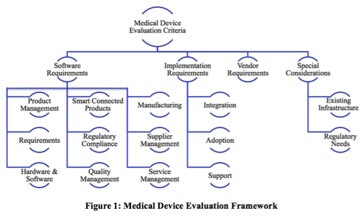
Conclusion
Medical device companies looking to improve profitability should shift their focus from a document centric process to a product centric process that will enable them to concentrate on quality. The cost of poor quality can be significant. In fact, McKinsey estimates that non-routine quality events cost the industry up to $5 billion. On the other hand, companies that focus on high quality enjoy a significant advantage with a potential increase in profits of 3% to 4% of revenues, according to McKinsey. The FDA has also concluded that a greater focus on quality is required. For example, they have found recalls have increased by 97%, with design errors being the leading cause. With the Case for Quality initiative, quality should be come an area of heightened focus, which a product centric approach supports. Unfortunately, making this shift, while still meeting regulatory requirements is hard. However, with the right technology, companies can make it much easier. The right solution should consider all aspects of the product lifecycle from requirements, through design, testing, manufacturing, and service. It should streamline the regulatory process and automate as much as possible. With traceability across the lifecycle and all deliverables, it will be much easier to provide regulatory compliance documentation. That traceability should also extend to suppliers. The right software solution can make it much easier to bring the right, high quality medical device to market, providing a competitive advantage. When making such a significant investment, you should also anticipate how your requirements will evolve to remain competitive in the future. Technological advancements such as IoT, AR, and 3D printing create opportunities for very profitable new business models that can increase the quality of patient care considerably. Features such as predictive and remote service offer flexibility around downtime to minimize the impact on patient health. These technologies can help medical device companies advance their mission of making people’s lives better.Recommendations
Based on industry experience and research for this report, Tech-Clarity offers the following recommendations:- Identify the top challenges your company needs to solve when bringing medical devices to market.
- Consider a solution that can support the entire lifecycle of your product, from patient needs and requirements to, design, test, manufacturing, and service.
- Look at solutions that will support the Case for Quality. A product centric approach and in integrated PLM and Quality Management System can help keep the focus on quality throughout the entire lifecycle.
- Use a vendor who is familiar with medical device regulatory requirements and has the technology to reduce the manual effort required to comply with regulations.
- Ensure you can manage the device and all associated document, design details, and changes while having traceability across everything.
- Support requirements with a solution that will work across all disciplines and has traceability across all stages and deliverables to support changes and compliance.
- Empower each team member including design, quality, procurement, manufacturing, and service with tools that work for them, while still ensuring a single source of truth for product information.
- Support quality management with traceability from requirements to test and reporting tools to ensure monitoring of trends that impact quality.
- Ensure tight controls on suppliers so as not to put compliance at risk.
- Select a solution that will support manufacturing so that you produce devices as designed and meet regulatory requirements.
- Think about medical device service requirements and use a solution that will support current and future service models such as predictive and remote service.
- Select a vendor who can integrate with your existing solutions while implementing new solutions where needed.
- Consider future needs for potential revenue streams and future needs for technologies such as IoT, 3D printing, and Augmented Reality.
Too Much Waste in Electrical Design
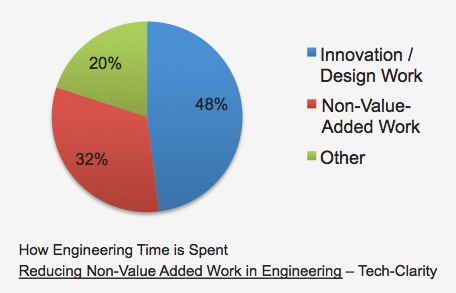 Engineers are the engines of product innovation. Their efforts turn product dreams and concepts into reality and, maybe most importantly, into company profits. Most companies recognize that their engineers need the right tools to get their work done. They enable them with a range of specialty tools for different aspects of design, analysis, and simulation. These are high-value solutions that help people design things that would be practically unachievable by more manual methods.
Why then, is there so much inefficiency in engineering? Our research, Reducing Non-Value-Added Work in Engineering, finds that technical resources spend about one-third of their time on non-valued-added (NVA) activity. The most significant portion of wasted time is spent simply searching for the information they need to do their jobs. For electrical engineering, too much time is lost searching for parts, looking up specs, waiting for data, reworking designs because of bad libraries, or resolving problems that other design teams already solved on an earlier design.
Beyond accessing the data they need, engineers spend a tremendous amount of time keeping work-in-progress (WIP) designs and processes under control. Or, perhaps worse, they waste time fixing problems resulting from poor control. These activities cost engineers, and their companies, significant time and money. More importantly, they slow the pace of innovation resulting in poor efficiency, excess cost, and late products. Engineers are constantly forced to take data management shortcuts in order to maintain schedule, mortgaging future gains in productivity to meet pressing deadlines.
Engineers are the engines of product innovation. Their efforts turn product dreams and concepts into reality and, maybe most importantly, into company profits. Most companies recognize that their engineers need the right tools to get their work done. They enable them with a range of specialty tools for different aspects of design, analysis, and simulation. These are high-value solutions that help people design things that would be practically unachievable by more manual methods.
Why then, is there so much inefficiency in engineering? Our research, Reducing Non-Value-Added Work in Engineering, finds that technical resources spend about one-third of their time on non-valued-added (NVA) activity. The most significant portion of wasted time is spent simply searching for the information they need to do their jobs. For electrical engineering, too much time is lost searching for parts, looking up specs, waiting for data, reworking designs because of bad libraries, or resolving problems that other design teams already solved on an earlier design.
Beyond accessing the data they need, engineers spend a tremendous amount of time keeping work-in-progress (WIP) designs and processes under control. Or, perhaps worse, they waste time fixing problems resulting from poor control. These activities cost engineers, and their companies, significant time and money. More importantly, they slow the pace of innovation resulting in poor efficiency, excess cost, and late products. Engineers are constantly forced to take data management shortcuts in order to maintain schedule, mortgaging future gains in productivity to meet pressing deadlines.
Conclusion
Today’s competitive global markets demand high levels of productivity. Over one-half of companies, however, suffer from design inefficiency due to data management challenges, according to our The Facts about Managing Product Data research. Companies can no long afford that level of NVA effort in engineering. It’s time to move away from informal methods that lead to errors and rework, and adopt disciplined methods to control, access, and share WIP electrical design data. This approach also helps engineers manage their processes and collaborate across electrical design disciplines.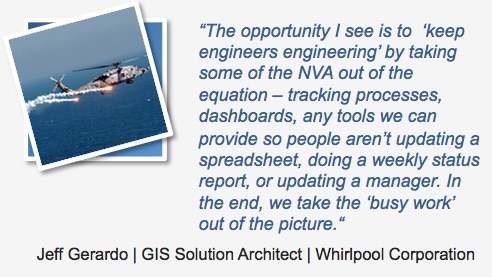 EDM is a critical element of the enterprise ecosystem. It integrates with PLM and ERP to provide the detailed WIP support needed for electrical designs in the context of an overall product innovation process. Electronic EDM is the missing element that gives electrical engineers the tools they need to be efficient and effective and get away from today’s high levels of NVA time. As a result, engineering can reduce non-value-added work, improve quality, reduce risk, and speed up design cycles and time to market.
Electrical EDM helps manufacturers:
EDM is a critical element of the enterprise ecosystem. It integrates with PLM and ERP to provide the detailed WIP support needed for electrical designs in the context of an overall product innovation process. Electronic EDM is the missing element that gives electrical engineers the tools they need to be efficient and effective and get away from today’s high levels of NVA time. As a result, engineering can reduce non-value-added work, improve quality, reduce risk, and speed up design cycles and time to market.
Electrical EDM helps manufacturers:
- Enable cross domain collaboration
- Drive real-time design and project visibility throughout the organization
- Manage WIP electrical design data without adding extra work steps
- Enable agility in electrical engineering workflows
- Efficiently find and reuse information when it’s needed
- Control, access, and share components
- Optimize technical and business needs via Strategic Parts Lists
- Control the engineering design, not just manage files
- Establish and implement best practice processes for design projects
How Managing Service Information Helps Your Business
In today’s highly competitive environment, it is hard to stand out. For many companies, providing customers with superior service gives them an edge in the market. To achieve higher levels of service, Top Performing companies combine best practices with technology to successfully manage service information. With the right technology, your business can:- Enable your technicians to find, understand and trust your product and parts information
- Reduce customer downtime by improving first time fix rates
- Increase service and technician efficiency
- Significantly lower overall service costs by reducing unnecessary repeat service visits
- Improve your brand reputation through superior service
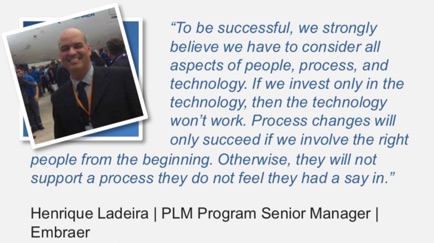 By ensuring technicians and customers have access to up-to-date service and parts information, you will increase customer satisfaction, leading to repeat business, a stronger brand reputation, and greater service revenue. The key is selecting the right solution. This Buyer’s Guide reveals what to look for in a service information management solution.
By ensuring technicians and customers have access to up-to-date service and parts information, you will increase customer satisfaction, leading to repeat business, a stronger brand reputation, and greater service revenue. The key is selecting the right solution. This Buyer’s Guide reveals what to look for in a service information management solution.
Select the Right Service Solution for your Needs
The right service information management solution can greatly improve service levels: Recommendations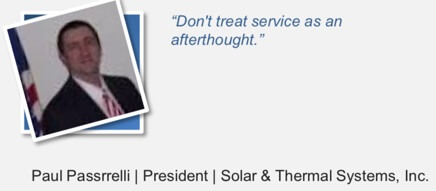 Invest in a solution that will improve customer satisfaction. This will lead to increased revenue growth.
Invest in a solution that will improve customer satisfaction. This will lead to increased revenue growth.- Focus on improving technician productivity by getting them the right information and parts at the right time.
- Leverage existing engineering data to produce service content.
- Ensure engineering and service information, including CAD models, remain linked so that information does not become outdated.
- Consider the needs of the extended enterprise and choose a solution that is compatible with existing solutions.
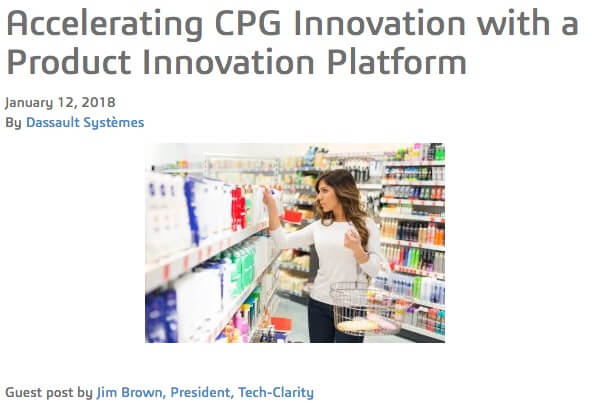 Read the post (free of charge, no registration required).
[post_title] => Accelerating CPG Innovation with an Innovation Platform (guest post)
[post_excerpt] =>
[post_status] => publish
[comment_status] => open
[ping_status] => open
[post_password] =>
[post_name] => cpg-pip
[to_ping] =>
[pinged] =>
[post_modified] => 2022-11-14 22:25:35
[post_modified_gmt] => 2022-11-15 03:25:35
[post_content_filtered] =>
[post_parent] => 0
[guid] => http://tech-clarity.com/?p=6557
[menu_order] => 0
[post_type] => post
[post_mime_type] =>
[comment_count] => 0
[filter] => raw
)
[19] => WP_Post Object
(
[ID] => 6522
[post_author] => 2
[post_date] => 2017-12-21 15:27:51
[post_date_gmt] => 2017-12-21 20:27:51
[post_content] =>
Read the post (free of charge, no registration required).
[post_title] => Accelerating CPG Innovation with an Innovation Platform (guest post)
[post_excerpt] =>
[post_status] => publish
[comment_status] => open
[ping_status] => open
[post_password] =>
[post_name] => cpg-pip
[to_ping] =>
[pinged] =>
[post_modified] => 2022-11-14 22:25:35
[post_modified_gmt] => 2022-11-15 03:25:35
[post_content_filtered] =>
[post_parent] => 0
[guid] => http://tech-clarity.com/?p=6557
[menu_order] => 0
[post_type] => post
[post_mime_type] =>
[comment_count] => 0
[filter] => raw
)
[19] => WP_Post Object
(
[ID] => 6522
[post_author] => 2
[post_date] => 2017-12-21 15:27:51
[post_date_gmt] => 2017-12-21 20:27:51
[post_content] => 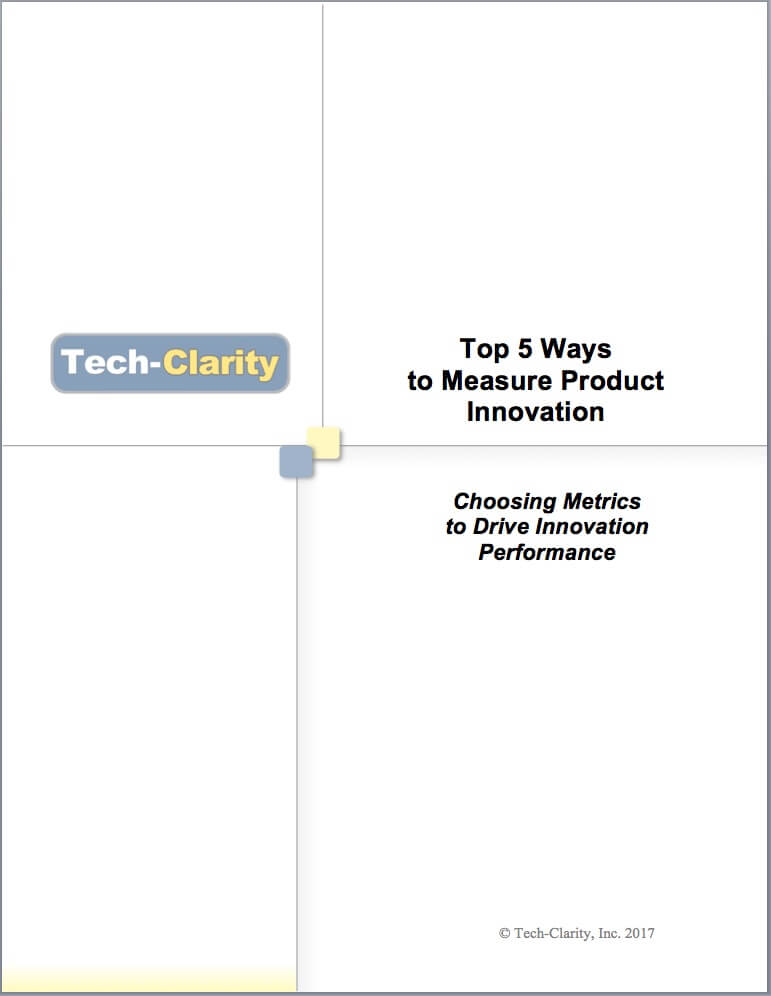 Top 5 Ways to Measure Product Innovation, Choosing Metrics to Drive Innovation Performance shares the importance of measuring innovation to improve innovation capability and outcomes.
Please enjoy the summary below, or click the report to download a PDF overview (free of charge, no registration required).
For the full report, please visit our sponsor, Planview (free of charge, registration required).
Top 5 Ways to Measure Product Innovation, Choosing Metrics to Drive Innovation Performance shares the importance of measuring innovation to improve innovation capability and outcomes.
Please enjoy the summary below, or click the report to download a PDF overview (free of charge, no registration required).
For the full report, please visit our sponsor, Planview (free of charge, registration required).
Why Measure Innovation?
Companies know they’ll be rewarded for innovation. They’ve seen that product developers who set the agenda in their market and force their competitors to react have a distinct advantage. But how do they know if they’re being innovative before they get invited to accept their industry’s “top innovator” award? One of the most common questions we’re asked is “how should we measure innovation?” It’s a relatively simple question, but one that doesn’t come with a simple answer. There’s no “silver bullet” way to measure it. First of all, innovation means different things by industry and by company. It depends on your business strategy and how you choose to compete. For example, measures would be different for a goal of true market disruption versus more incremental innovation. Innovation also has different levels of granularity. It may apply to a product line, a product, or a feature – each with different impacts and potentially different ways to measure success. This is without even considering organizations who call process improvements, safety initiatives, and lean measures “innovation,” which can further complicate things. With all of the potential variability, let’s step back and talk about why it’s important to measure innovation in the first place. Metrics help drive desired outcomes. We find that companies want to:- Make innovation as systematic as possible
- Have a repeatable innovation capability
- Drive the right organizational behavior
- Achieve more reliable and predictable outcomes
- Improve innovation performance over time
Table of Contents
- Why Measure Innovation?
- Measuring by Outcomes
- Measuring Innovation Capability
- Measuring Innovation Contributions
- Measuring the Strategic Portfolio
- Measuring Calculated Risk Taking
- Measuring Time and Space to Innovate
- Measuring NPDI Control
- What’s Needed to Measure Innovation?
- Conclusion
- About the Author
Conclusion
Innovation is clearly important to company success, and what gets measured gets improved. This makes measuring innovation an important goal. It’s also a challenging one. There are a number of ways that companies can measure innovation performance by outcomes, such as the percentage of revenue from new products, but this information typically comes too late to make in-course adjustments and improvements. Another approach is to introduce measures that ensure the environment is conducive to innovation. Companies can put in place measurements that help ensure the organization is contributing to innovation and product portfolios contain enough innovation of the right variety. Organizations can survey whether employees feel they have the ability to take calculated risks and whether they have the time and space required to innovate. Metrics can also ensure that their processes and tools allow them to profit from innovation through effective NPDI.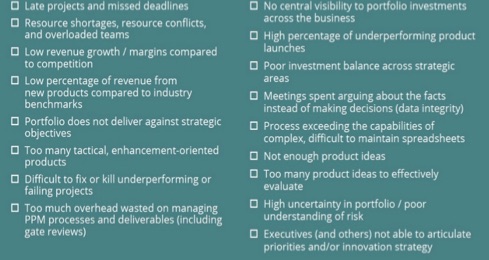 For any of these metrics to be effective, companies need to have the right process and data management infrastructure in place, including:
For any of these metrics to be effective, companies need to have the right process and data management infrastructure in place, including:
- The right data and a mechanism to gather it efficiently
- Accurate, visual reporting tools and dashboards that they can drill down from
- Honest information and the ability to capture knowledge – especially failures – to drive future innovation
 [post_title] => PLM in the Cloud Webcast with Sogeti, and Microsoft
[post_excerpt] =>
[post_status] => publish
[comment_status] => open
[ping_status] => open
[post_password] =>
[post_name] => plm-cloud-webcast-sogeti-microsoft
[to_ping] =>
[pinged] =>
[post_modified] => 2022-11-14 22:26:46
[post_modified_gmt] => 2022-11-15 03:26:46
[post_content_filtered] =>
[post_parent] => 0
[guid] => https://tech-clarity.com/?p=6947
[menu_order] => 0
[post_type] => post
[post_mime_type] =>
[comment_count] => 0
[filter] => raw
)
[comment_count] => 0
[current_comment] => -1
[found_posts] => 805
[max_num_pages] => 41
[max_num_comment_pages] => 0
[is_single] =>
[is_preview] =>
[is_page] =>
[is_archive] =>
[is_date] =>
[is_year] =>
[is_month] =>
[is_day] =>
[is_time] =>
[is_author] =>
[is_category] =>
[is_tag] =>
[is_tax] =>
[is_search] =>
[is_feed] =>
[is_comment_feed] =>
[is_trackback] =>
[is_home] => 1
[is_privacy_policy] =>
[is_404] =>
[is_embed] =>
[is_paged] =>
[is_admin] =>
[is_attachment] =>
[is_singular] =>
[is_robots] =>
[is_favicon] =>
[is_posts_page] =>
[is_post_type_archive] =>
[query_vars_hash:WP_Query:private] => d18c07f9320c330d802878b890bc577e
[query_vars_changed:WP_Query:private] => 1
[thumbnails_cached] =>
[allow_query_attachment_by_filename:protected] =>
[stopwords:WP_Query:private] =>
[compat_fields:WP_Query:private] => Array
(
[0] => query_vars_hash
[1] => query_vars_changed
)
[compat_methods:WP_Query:private] => Array
(
[0] => init_query_flags
[1] => parse_tax_query
)
[query_cache_key:WP_Query:private] => wp_query:f86c983b0f2a645ee0e388b0a4851c82:0.33420100 17671458890.34307000 1767145889
)
[post_title] => PLM in the Cloud Webcast with Sogeti, and Microsoft
[post_excerpt] =>
[post_status] => publish
[comment_status] => open
[ping_status] => open
[post_password] =>
[post_name] => plm-cloud-webcast-sogeti-microsoft
[to_ping] =>
[pinged] =>
[post_modified] => 2022-11-14 22:26:46
[post_modified_gmt] => 2022-11-15 03:26:46
[post_content_filtered] =>
[post_parent] => 0
[guid] => https://tech-clarity.com/?p=6947
[menu_order] => 0
[post_type] => post
[post_mime_type] =>
[comment_count] => 0
[filter] => raw
)
[comment_count] => 0
[current_comment] => -1
[found_posts] => 805
[max_num_pages] => 41
[max_num_comment_pages] => 0
[is_single] =>
[is_preview] =>
[is_page] =>
[is_archive] =>
[is_date] =>
[is_year] =>
[is_month] =>
[is_day] =>
[is_time] =>
[is_author] =>
[is_category] =>
[is_tag] =>
[is_tax] =>
[is_search] =>
[is_feed] =>
[is_comment_feed] =>
[is_trackback] =>
[is_home] => 1
[is_privacy_policy] =>
[is_404] =>
[is_embed] =>
[is_paged] =>
[is_admin] =>
[is_attachment] =>
[is_singular] =>
[is_robots] =>
[is_favicon] =>
[is_posts_page] =>
[is_post_type_archive] =>
[query_vars_hash:WP_Query:private] => d18c07f9320c330d802878b890bc577e
[query_vars_changed:WP_Query:private] => 1
[thumbnails_cached] =>
[allow_query_attachment_by_filename:protected] =>
[stopwords:WP_Query:private] =>
[compat_fields:WP_Query:private] => Array
(
[0] => query_vars_hash
[1] => query_vars_changed
)
[compat_methods:WP_Query:private] => Array
(
[0] => init_query_flags
[1] => parse_tax_query
)
[query_cache_key:WP_Query:private] => wp_query:f86c983b0f2a645ee0e388b0a4851c82:0.33420100 17671458890.34307000 1767145889
)
All Results for "All"
Retail Analytics Solutions (webcast)
How can retail companies improve their decisions to survive in today’s complex omnichannel environment and anticipate changes in trends in a dynamic and volatile market? Can predictive retail analytics help? If so, what should retailers look for in a solution? Listen to Tech-Clarity’s Michelle Boucher and PTC’s Brad Thomas, Product Manager of the Retail Business…
Enabling the Digital Twin with IoT (webcast)
How can manufacturers get more value from their digital initiatives by leveraging the Internet of Things (IoT)? Manufacturers who embrace digitalization gain increased agility, innovation, speed, quality, and profitability in design, development, manufacturing, and the service lifecycle. One of the key enablers of these improvements is establishing a closer connection between product models and how…
How Roche Diabetes Care Is Winning at PLM, Quality, and Compliance (webcast)
How can medical device companies balance quality, innovation, compliance, and profitability? Where does a PLM solution fit in? Is it possible to achieve a single source of truth? Listen to Claus Gärtner, Head of Operations & Quality IT at Roche Diabetes Care, René Zoelfl PTC Life Sciences Development Manager, and Tech-Clarity’s Michelle Boucher discuss how to support the…
IoT Machine Monitoring Quick Start Guide
How can manufacturers quickly gain value from remote equipment monitoring using the Internet of Things to begin their digital and service transformations? The Monitoring Equipment with IoT Quick Start Guide eBook offers pragmatic advice for companies that want to jump-start their IoT initiative with a practical approach that leads to much more significant value over…
Top 5 Tips to Transforming Product Design for Smarter Products
What steps should you take to transform your product design processes so you can develop smarter products? Tech-Clarity’s Top Five Tips to Transform Product Design for Smarter Products shares advice to help companies on their journey to develop smarter products. For many, making products smarter and connected is a key product trend that is becoming…
Smart Systems Buyer’s Guide for Systems Engineers and IoT Solution Architects (white paper)
How can manufacturers design systems with greater confidence the system will work as designed? Tech-Clarity’s Smart Systems Buyer’s Guide for Systems Engineers and IoT Solution Architects helps manufacturers develop selection criteria to evaluate software solutions to support system design. The guide targets systems engineerings, IoT solution architects, and others involved with designing systems. Tech-Clarity’s Buyer’s Guides…
Product Data Management Buyer’s Guide (white paper)
How can manufacturers ensure they get the most value from a new PDM solution? The PDM Buyer’s Guide provides criteria for companies to select the right Production Data Management system to manage the complexity of today’s products and product development environments. Manufacturers have many choices for managing critical CAD files and product data, including shared…
Jumpstarting IoT with Remote Equipment Monitoring (webcast)
How can monitoring equipment remotely provide value and help get your IoT initiative started? Jim Brown joins PTC’s Michael Anderson for a webcast discussion to find out. Jim will share perspectives from his research including an overview of how remote equipment monitoring via the IoT can help drive significant service improvements. Jim will share tips from his upcoming Remote…
Requirements Management: How to select the right solution? (webcast)
What’s the best way to make sure the product you design and build actually meets requirements? How do requirements management solutions help? Listen and interview of SAFRAN Group‘s Yannick Laplume, Tech-Clarity’s Michelle Boucher, and PTC’s Christoph Braeuchle as they discuss the value of of a requirements management solution. They explore topics such as: The business value of requirements management How…
How Boston Scientific Selected their PLM Medical Device Software Solution (webcast)
Does having multiple systems to manage product information create challenges for your company? Do you find some systems are so heavily customized, it’s hard to take advantage of the latest software enhancements? How can a PLM medical device solution help? If you have thought about any of these questions, you will find this webinar especially…
Service Information: The Pivotal Factor in Your Aftermarket Business (webcast)
Listen to, PTC’s Dave Duncan and Tech-Clarity’s Michelle Boucher discuss how to improve the accuracy of service information for field personnel. They share stories about Embraer, Airbus Helicopters, and Kirloskar Oil Engines and explain how they are transforming their service organizations. During this webcast, you will also learn: How poor service information affects technician productivity, customer satisfaction,…
Digitalization in the Medical Device Industry (animation)
How can digitalization help medical device companies improve innovation and drive profitable growth despite increased complexity and regulatory scrutiny? This animated video offers a look at what a digital medical device company looks like and offers three initiatives companies can adopt to start their digital transformation. Digitalization offers significant benefits to medical device manufacturers because…
Cloud PLM Buyer’s Guide
What should manufacturers look for when they buy cloud software for Product Lifecycle Management? Our PLM Cloud Buyer’s Guide shares the important factors companies need to know when they evaluate cloud solutions. The guide explains the reasons companies are pursuing cloud options including standard benefits like reduced implementation cost and faster time to benefit, but…
Selecting the Right Cloud PLM System (webcast)
Jim Brown joins PTC’s Alan Goldman and Mark Lobo for a web panel discussion on adopting Cloud PLM. Jim will share perspectives from his recent research including cloud PLM benefits and requirements. Jim will share insights from his upcoming Cloud PLM Buyer’s guide including criteria companies should look for in a solution, for adoption, and their vendor partner….
Medical Devices Manufacturers Software Selection Guide for 2018
Tech-Clarity’s Medical Devices Manufacturers Software Selection Guide for 2018 helps manufacturers identify the right buying criteria for software solutions to support developing, producing, and servicing medical devices. For 2018, the guide has also been updated to include additional considerations for the Internet of Things (IoT). This buyer’s guide also takes into account unique needs for medical device…
Managing Electronic Design Data and WIP (eBook)
The Managing Work in Progress in Electrical Design ebook shares best practices for managing electrical engineering data, designs, and processes. The research explains the role that Electronic Data Management (EDM) plays alongside other solutions including PDM, ALM, and PLM that manage mechanical CAD, software development, and the overall product development process respectively. EDM plays a…
Buyer’s Guide for Managing Service Information (eBook, survey results)
Tech-Clarity’s Buyer’s Guide for Managing Service Information identifies the biggest challenges of managing service and parts information. It then looks at how Top Performing companies overcome these companies and what they look for in a software solution to support them. One of the top things they do is leverage the information produced by engineering to support…
Accelerating CPG Innovation with an Innovation Platform (guest post)
Jim Brown contributed his thoughts on Accelerating CPG Innovation with an Innovation Platform to the Dassault Systèmes 3D Perspectives Blog. He shares his views on the innovation imperative in CPG and how consumer goods companies can take innovation to the next level using a modern Product Innovation Platform (PIP). The post explains how an effective…
Top 5 Ways to Measure Product Innovation (white paper)
Top 5 Ways to Measure Product Innovation, Choosing Metrics to Drive Innovation Performance shares the importance of measuring innovation to improve innovation capability and outcomes. Please enjoy the summary below, or click the report to download a PDF overview (free of charge, no registration required). For the full report, please visit our sponsor, Planview (free…
